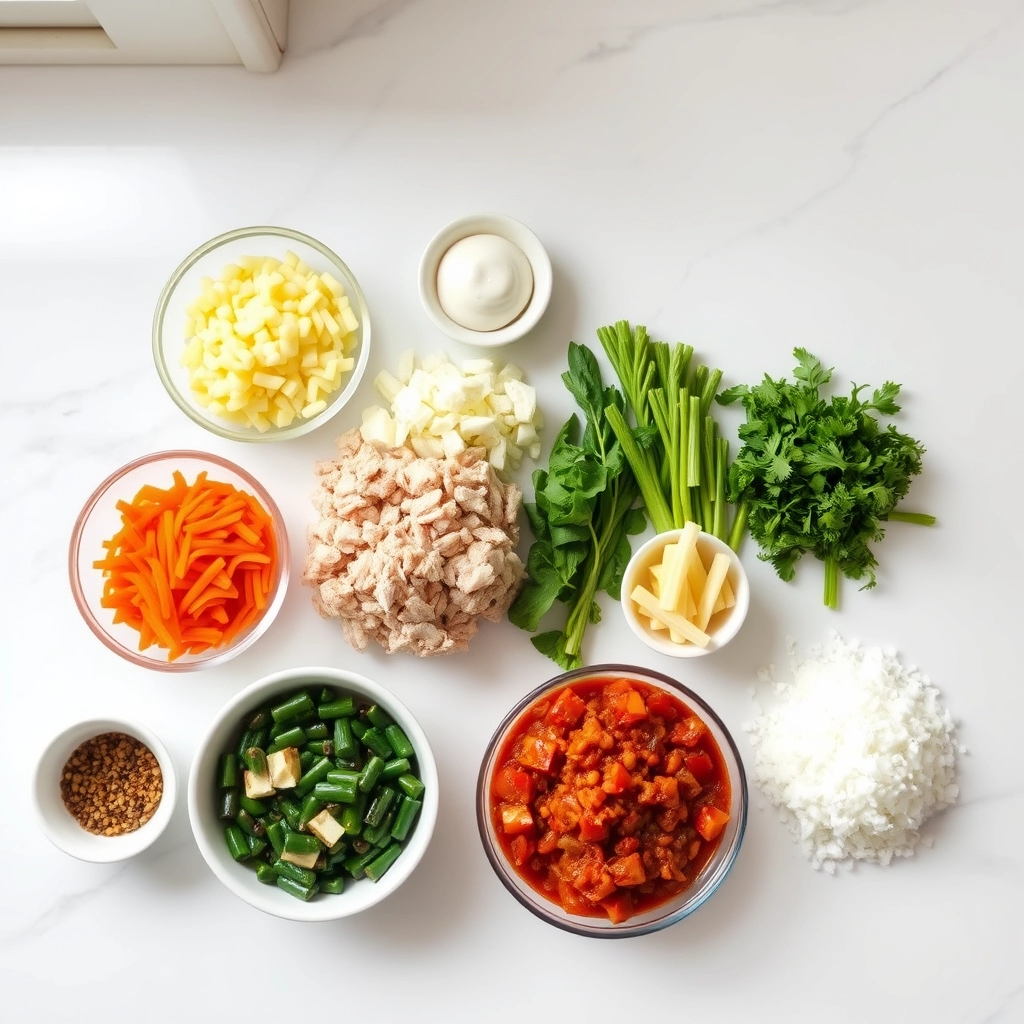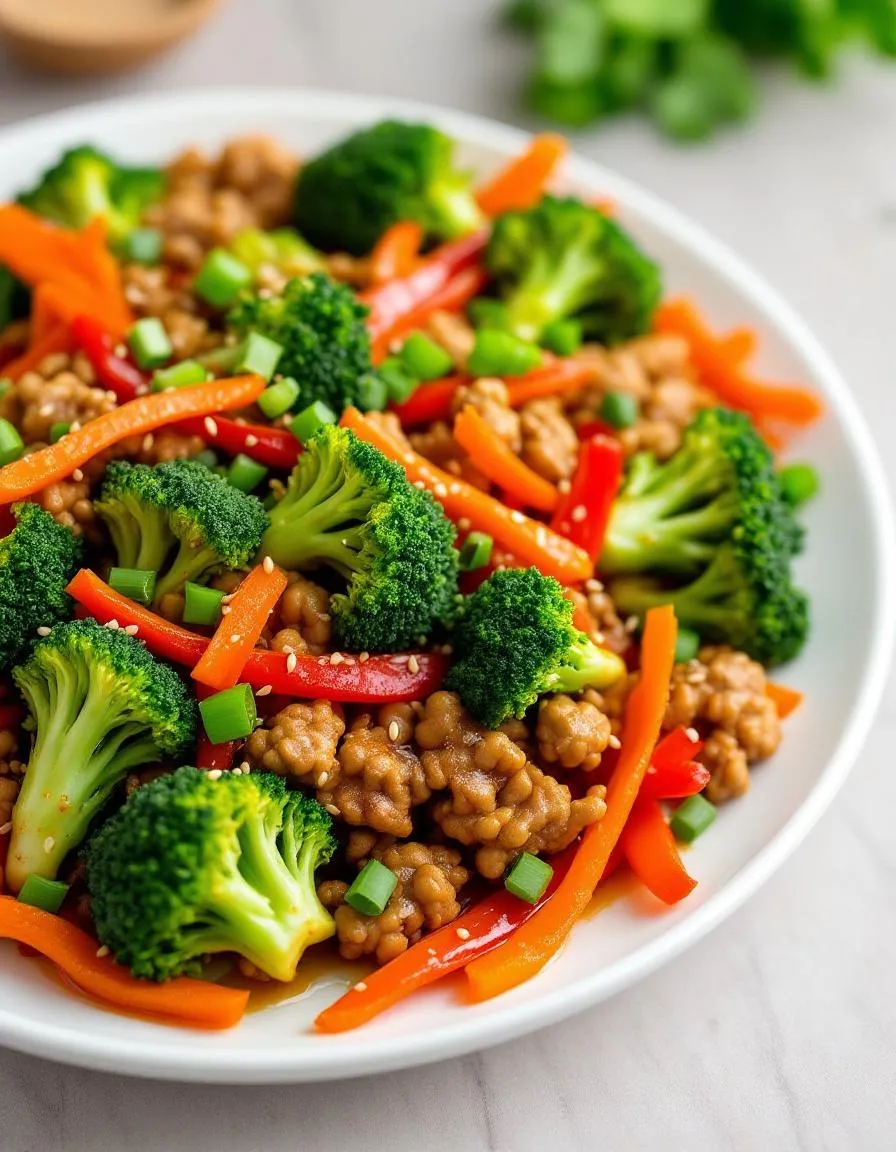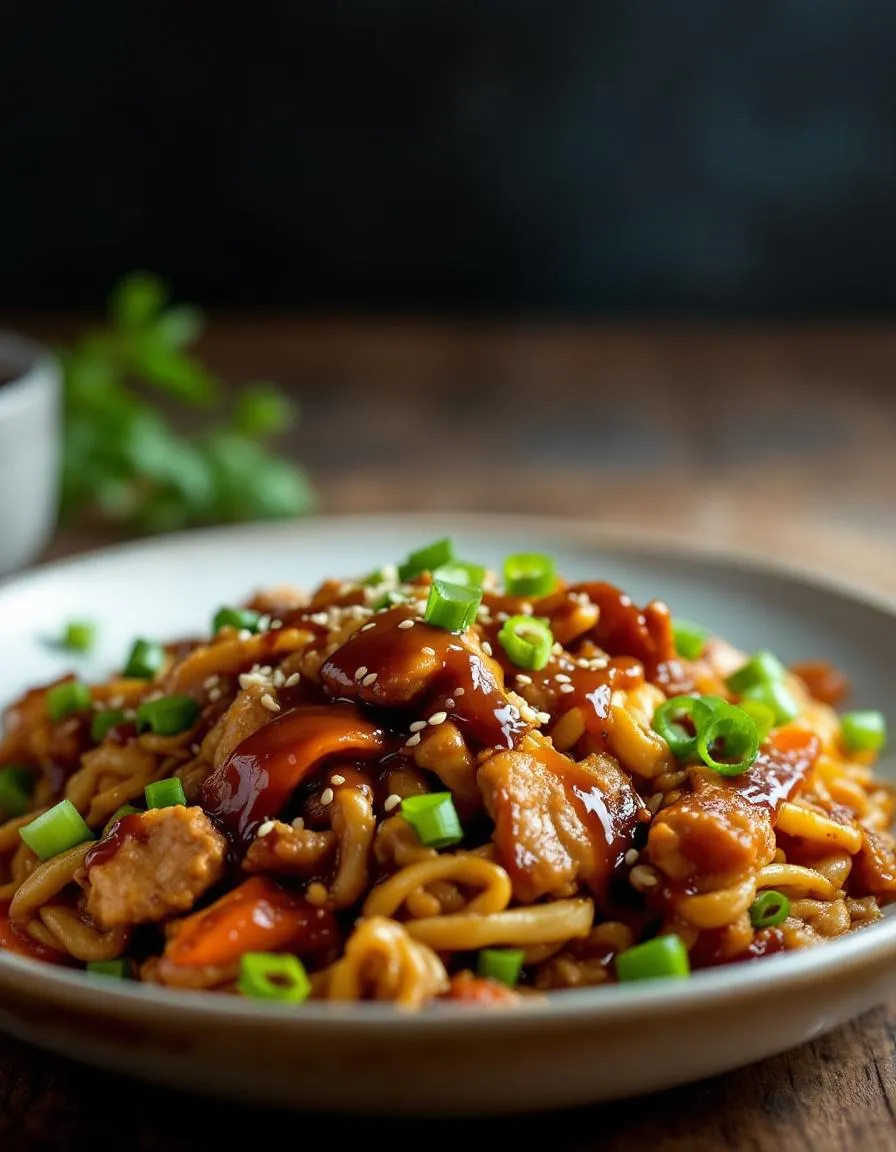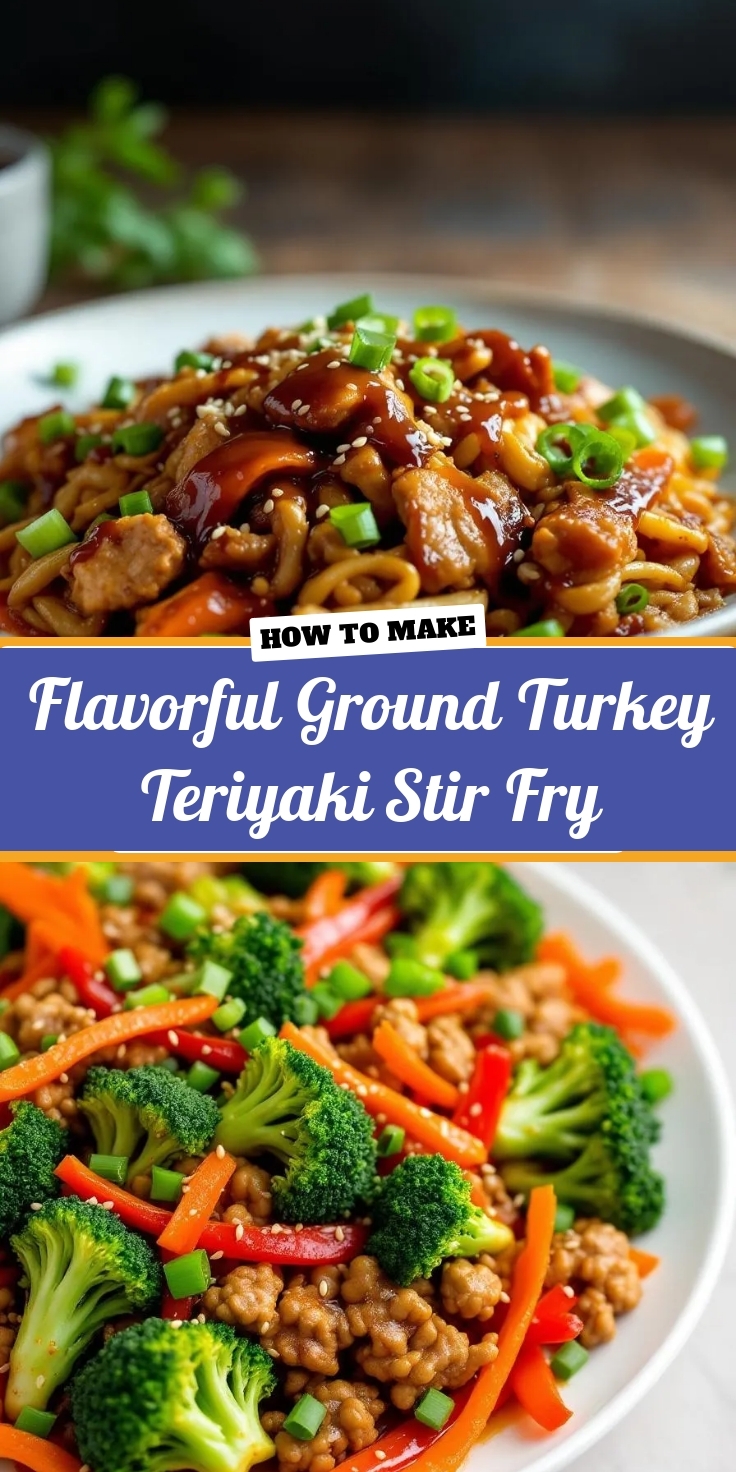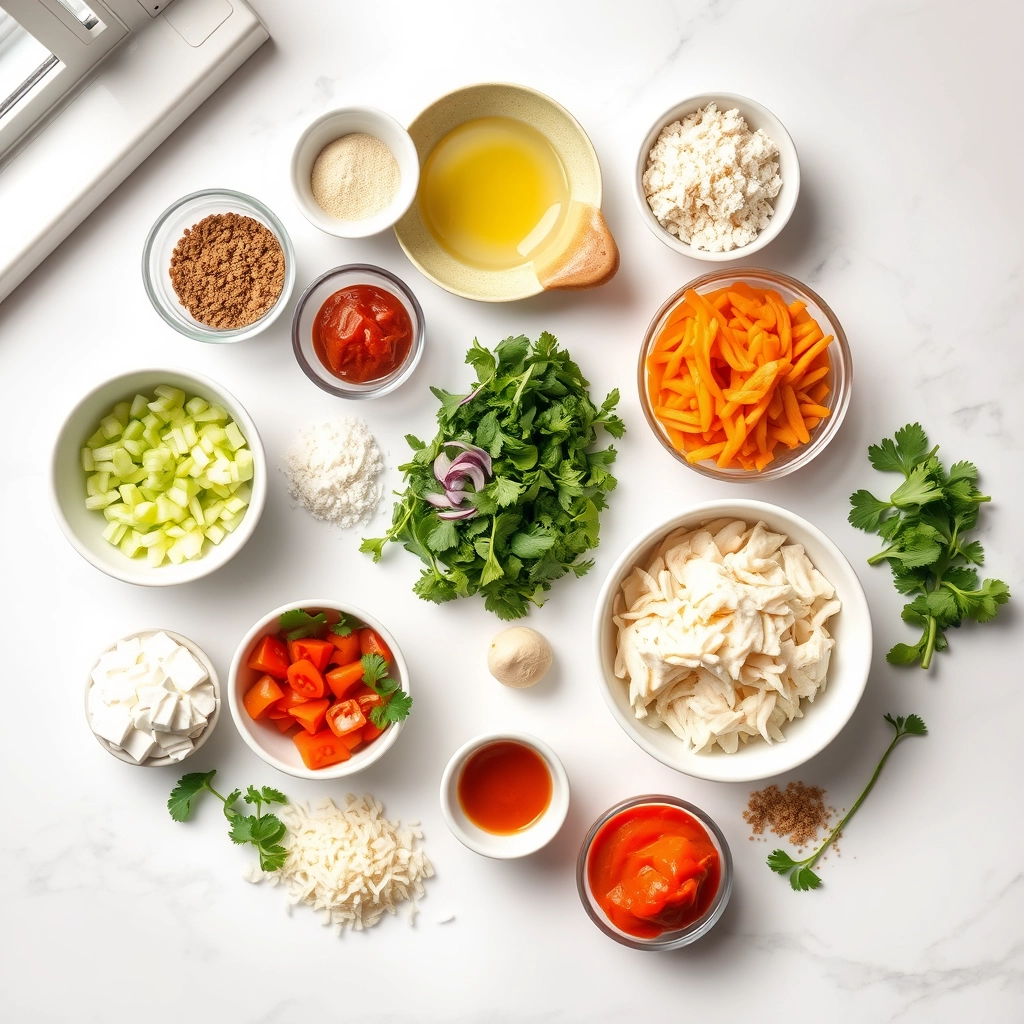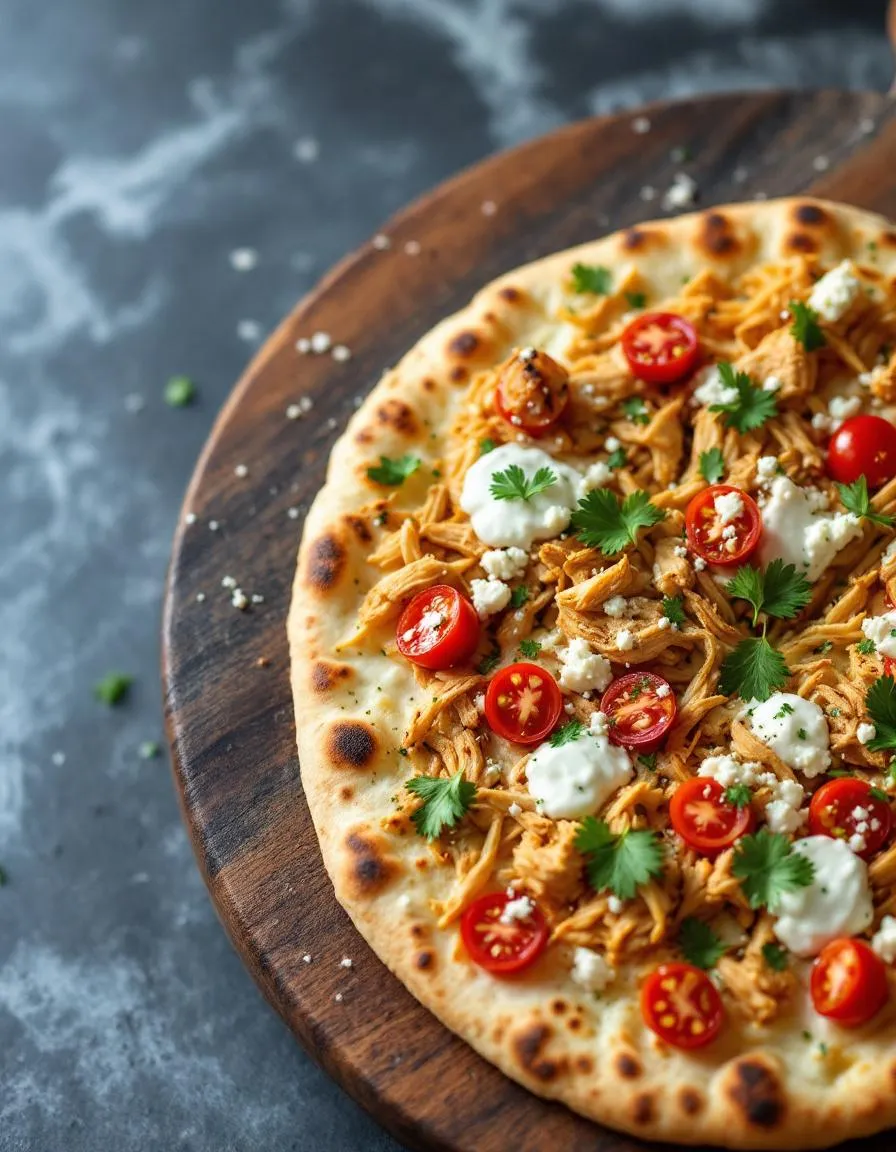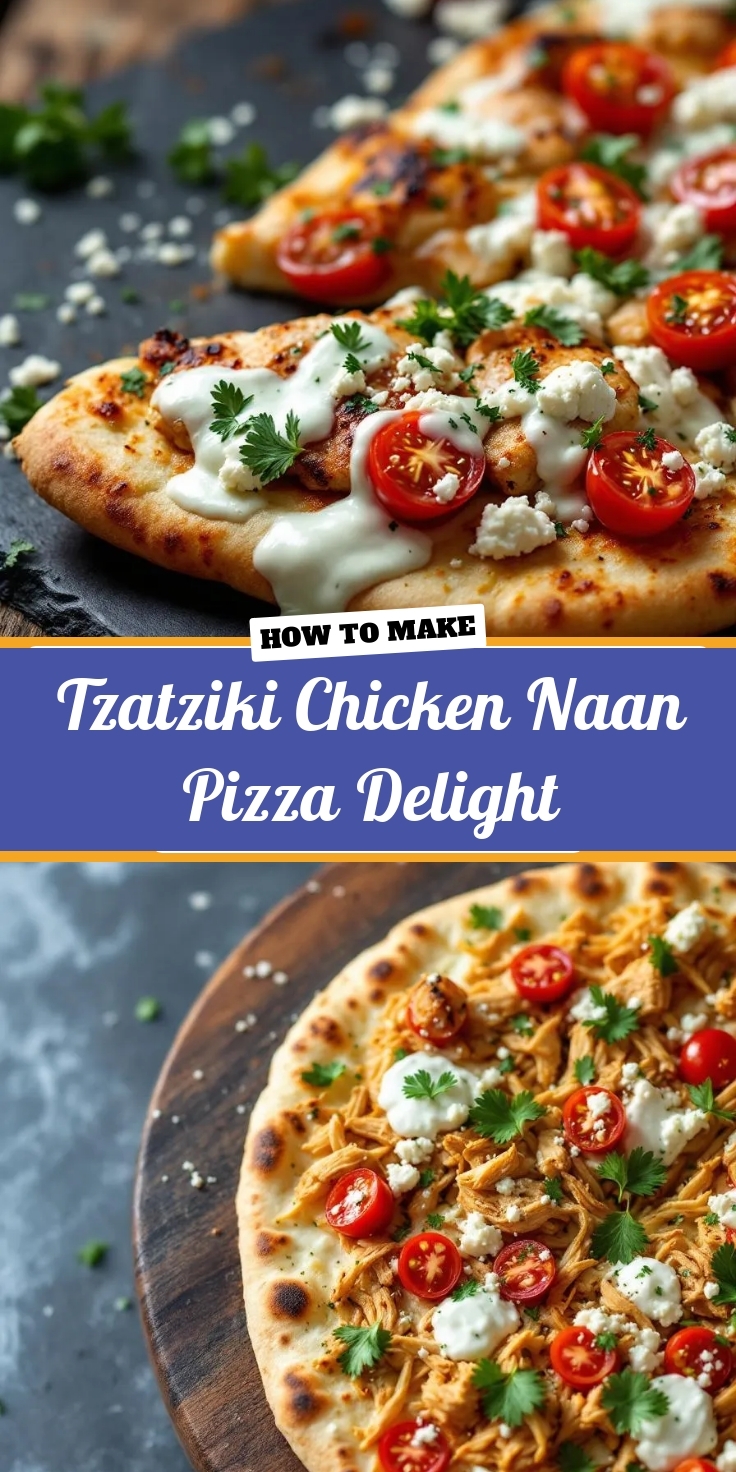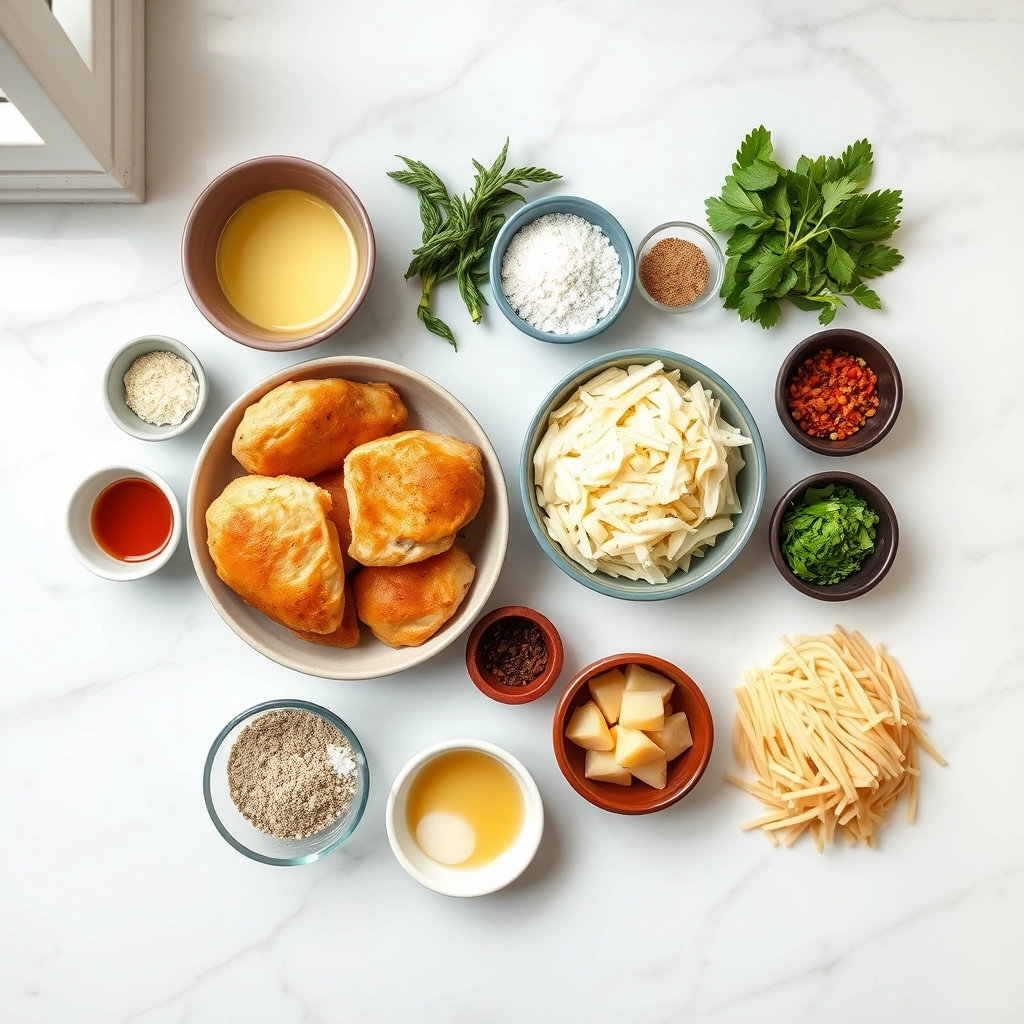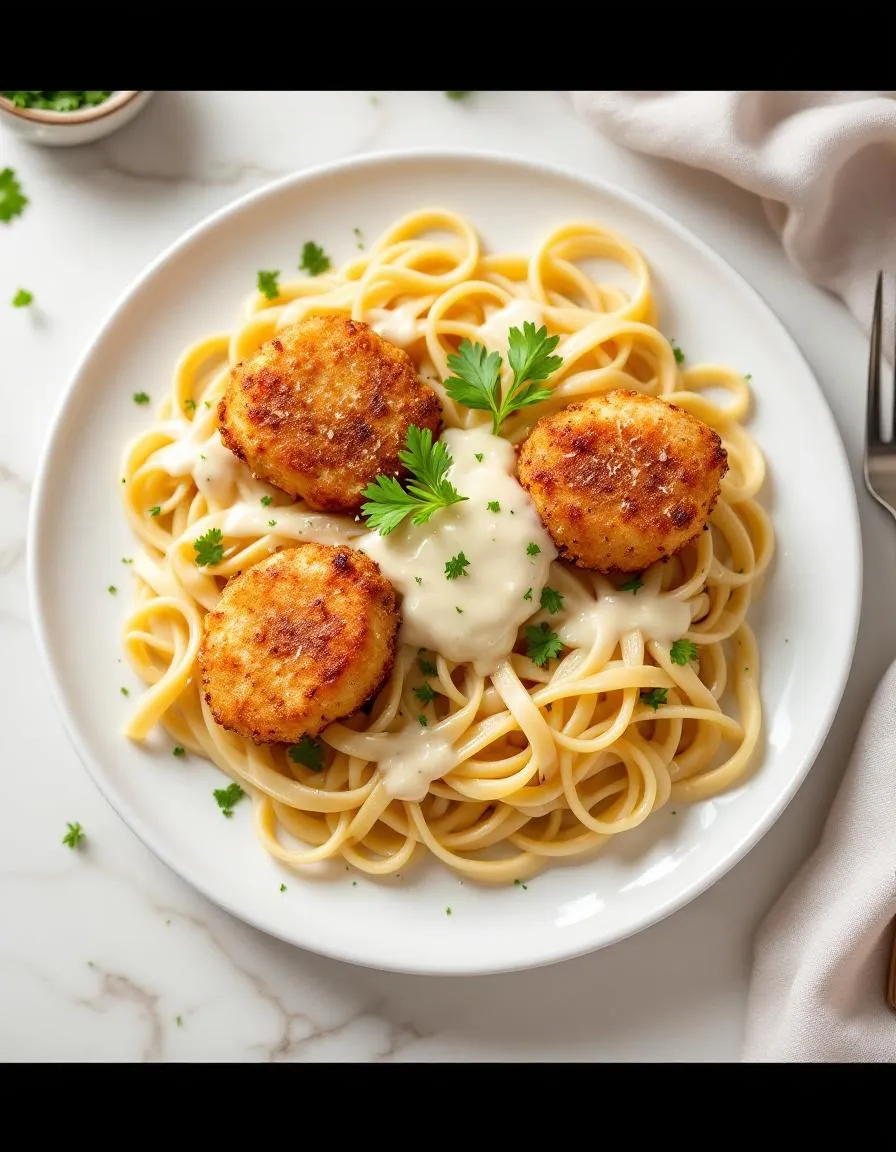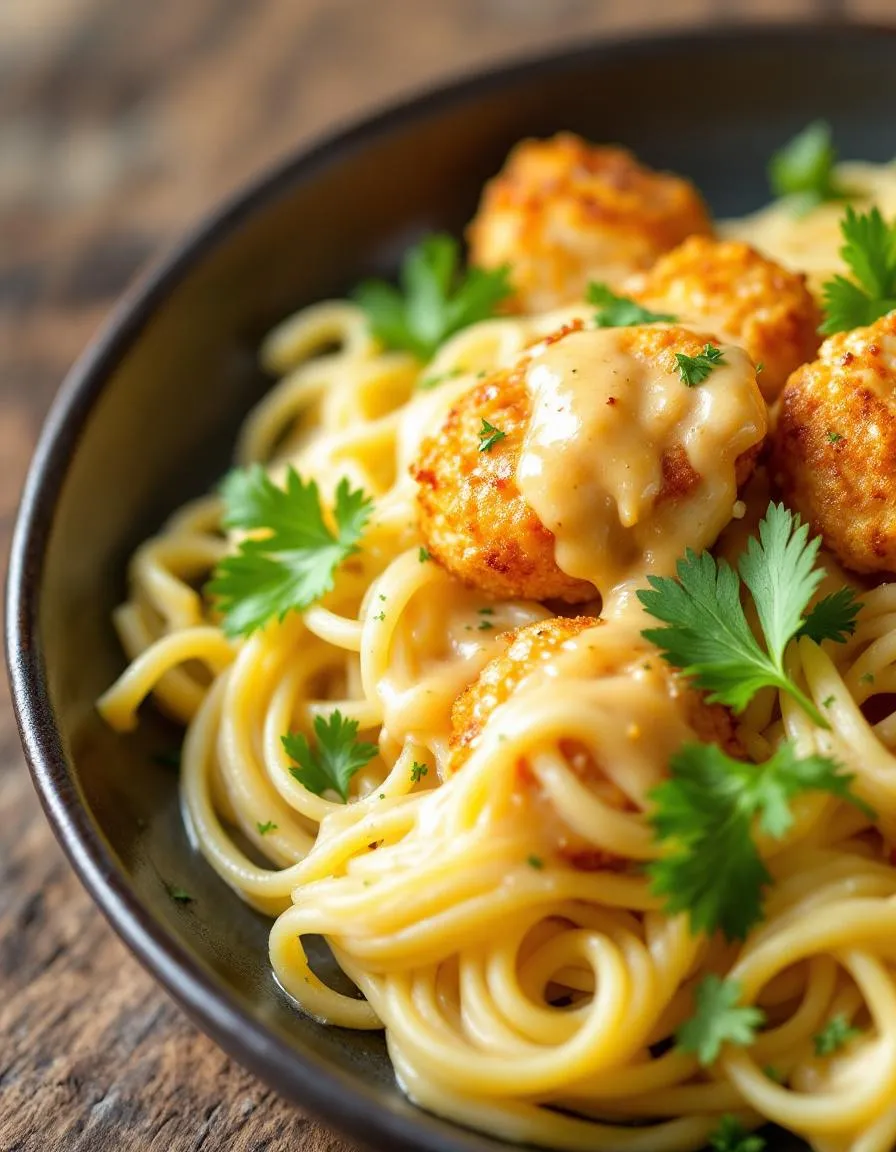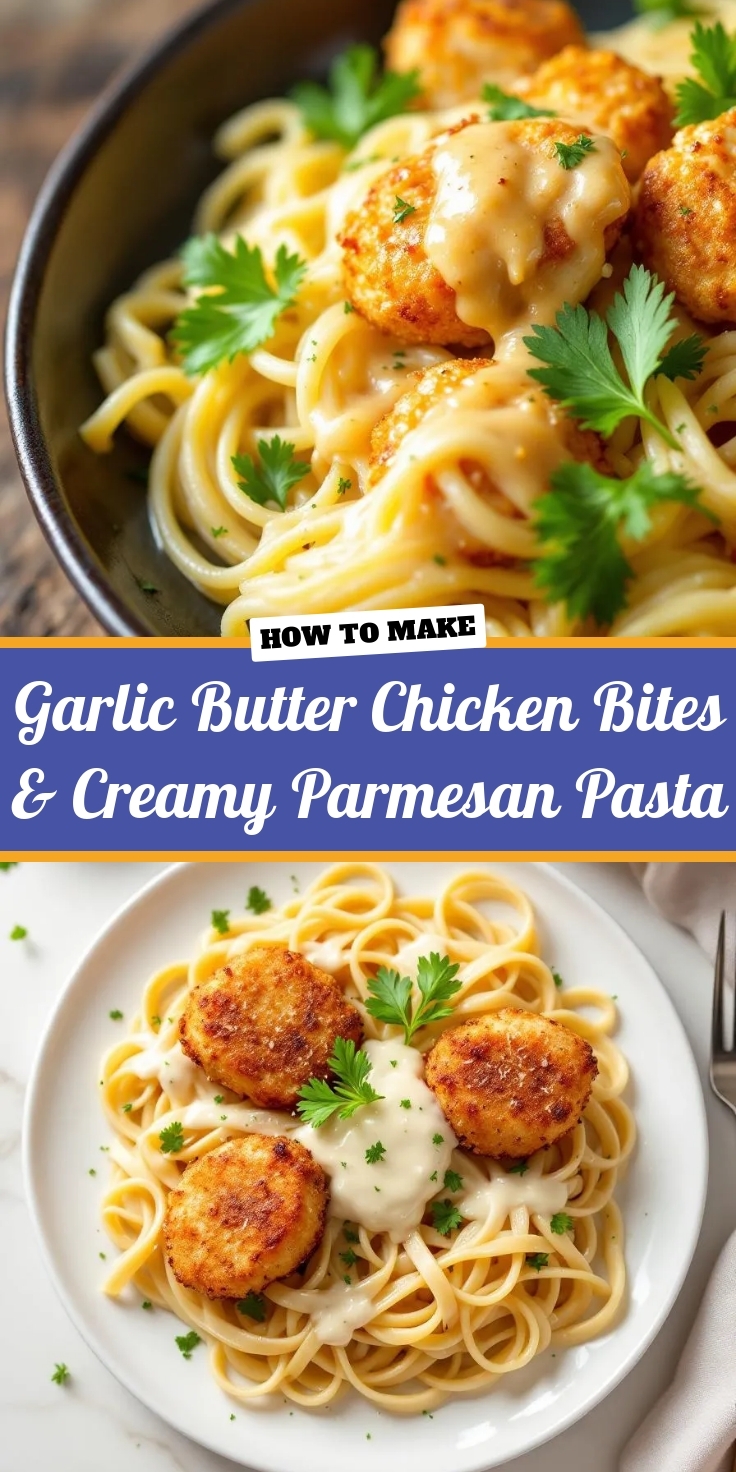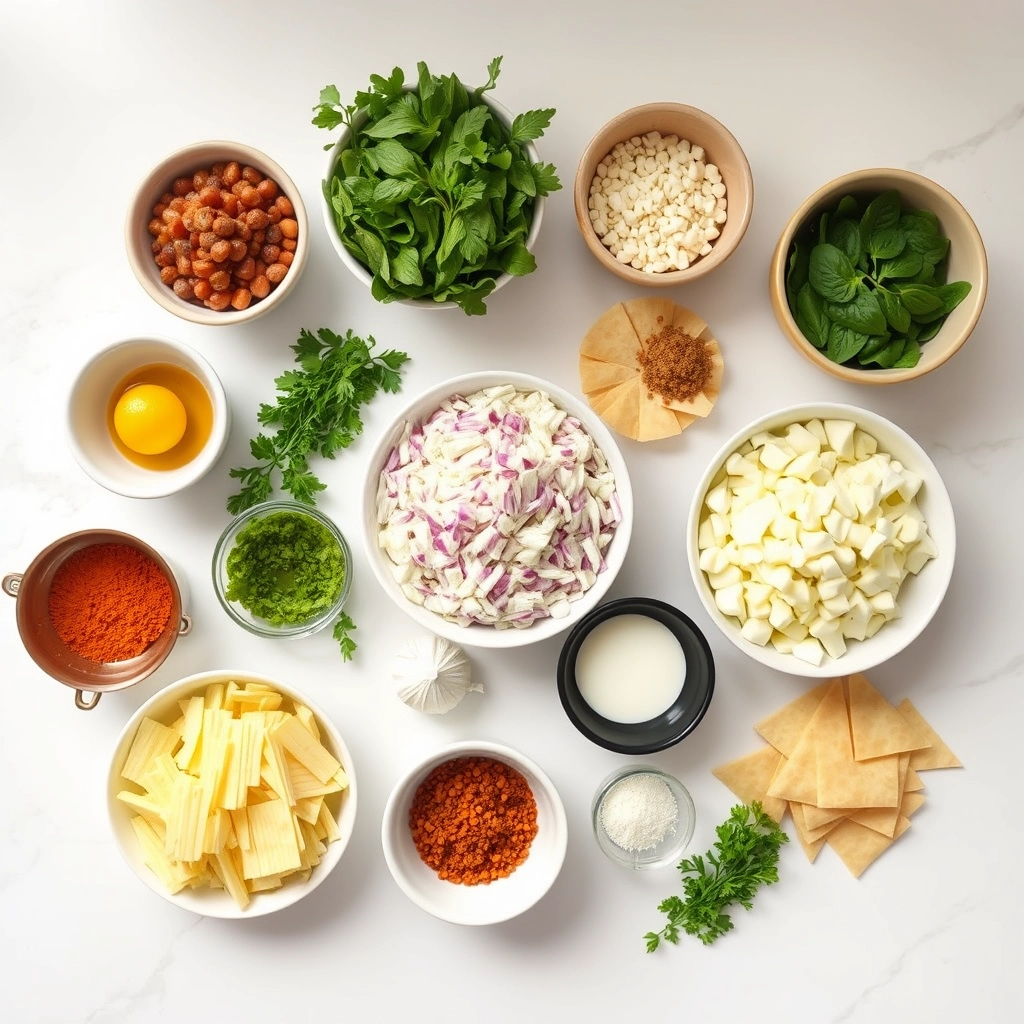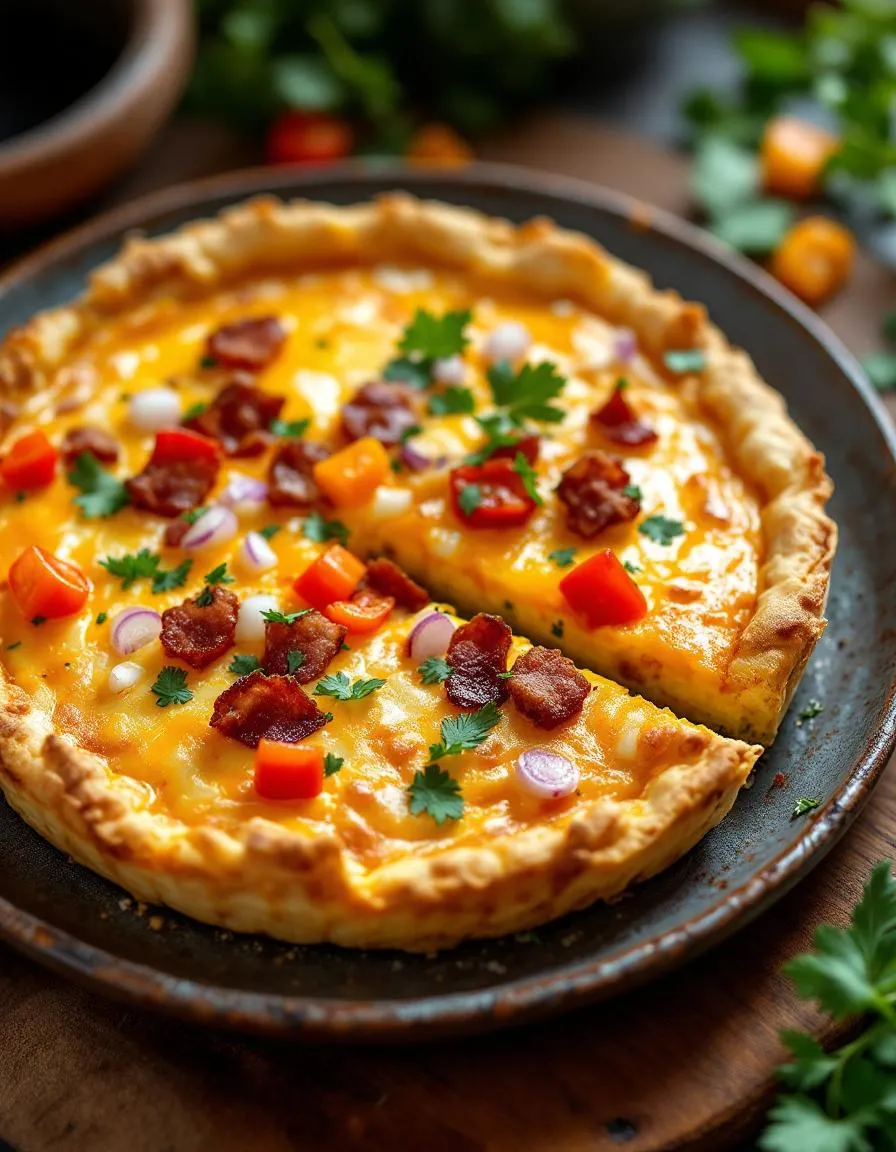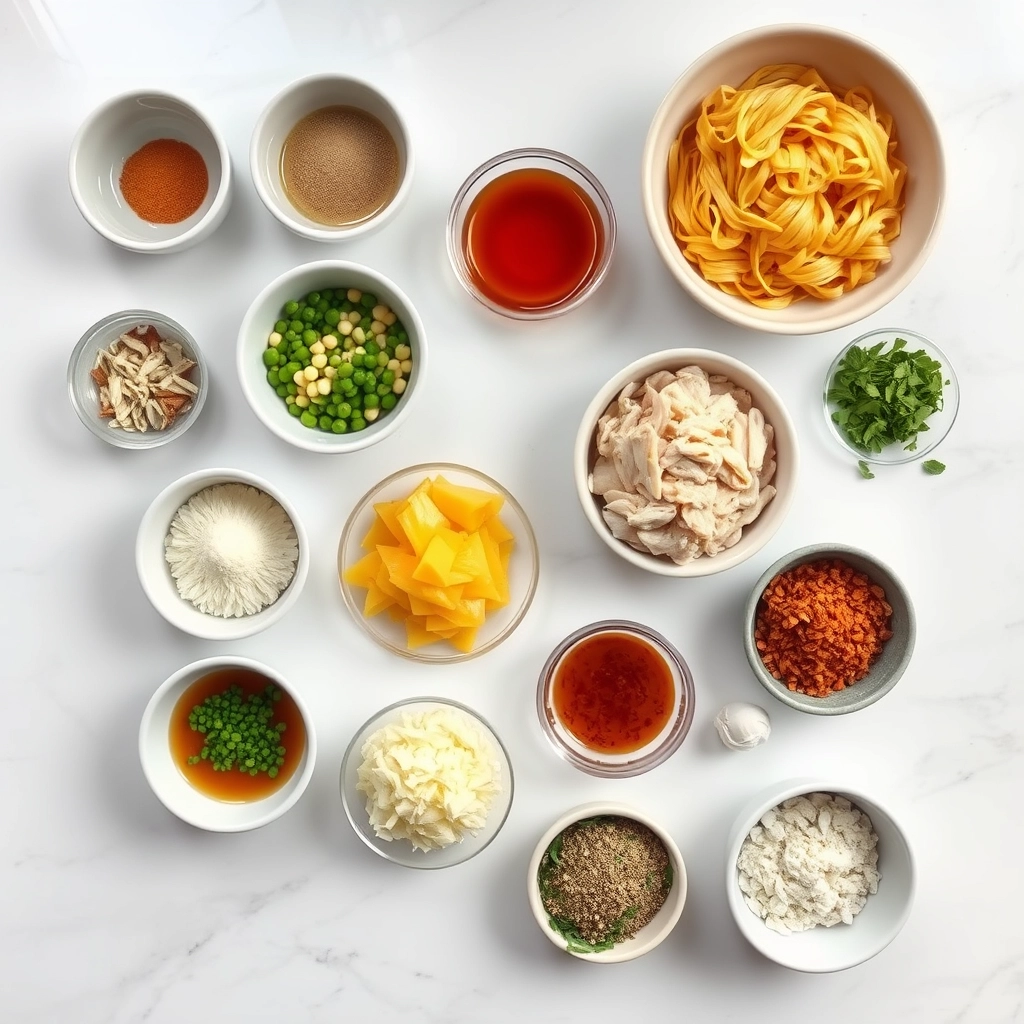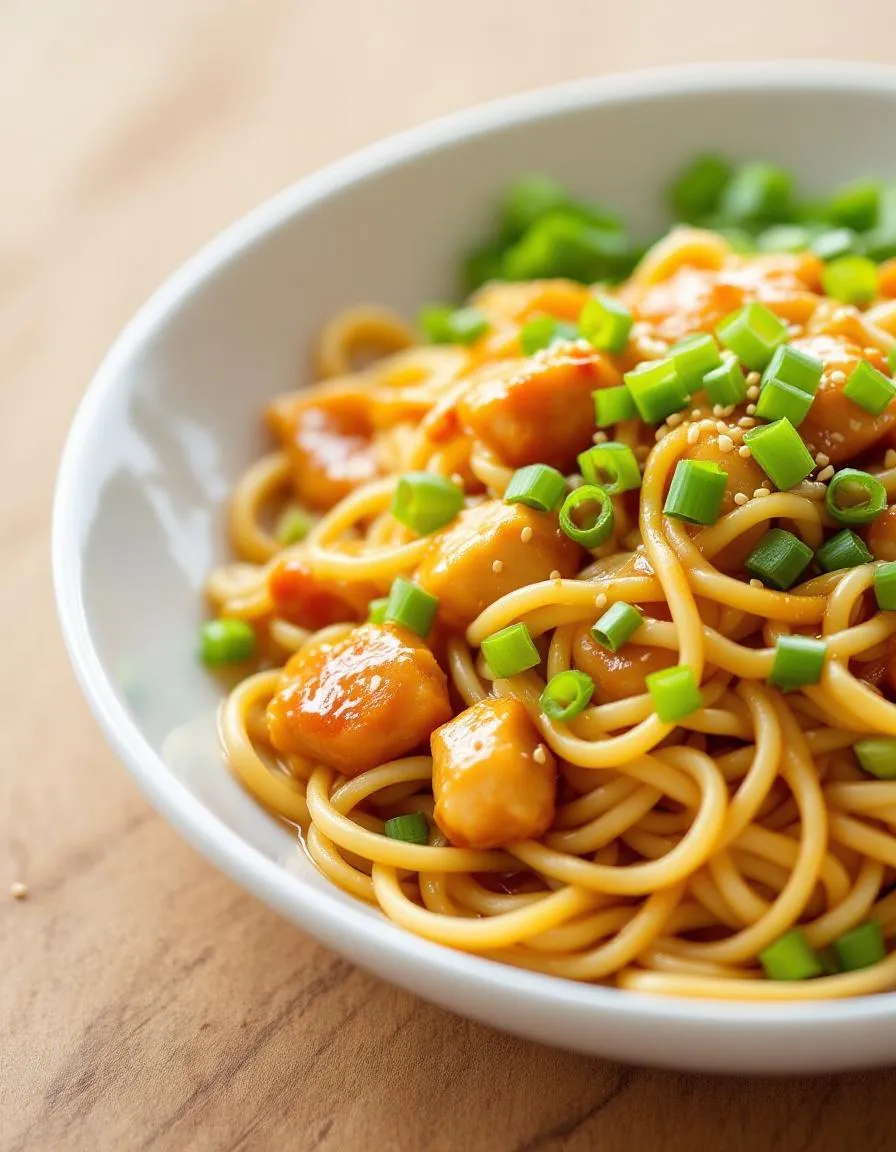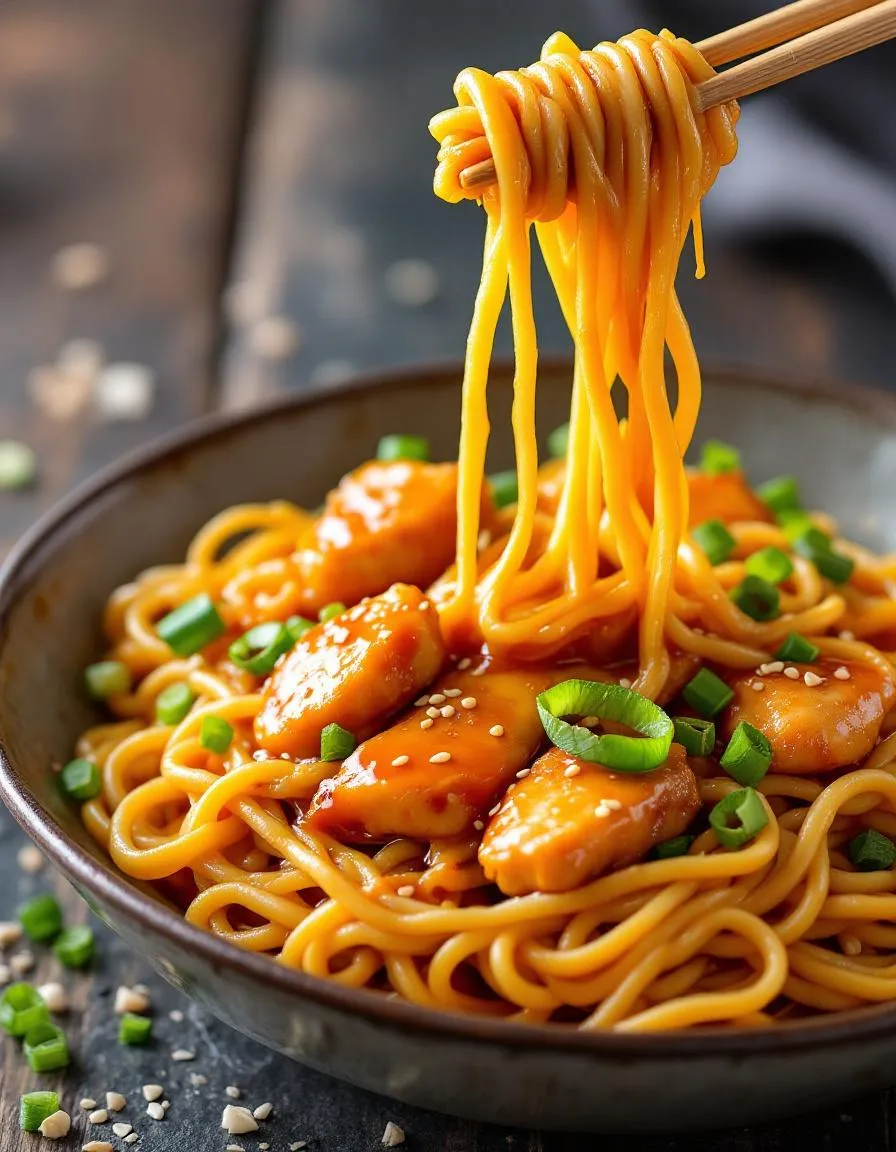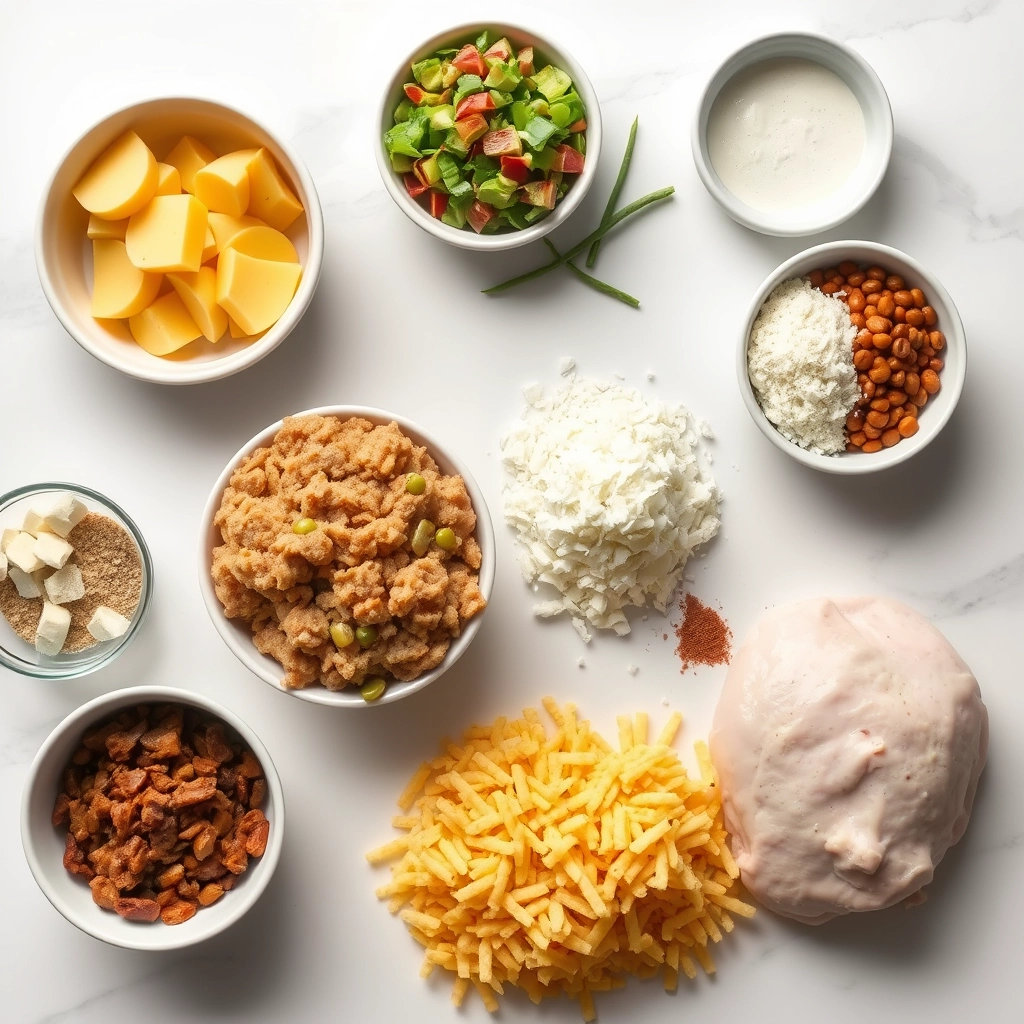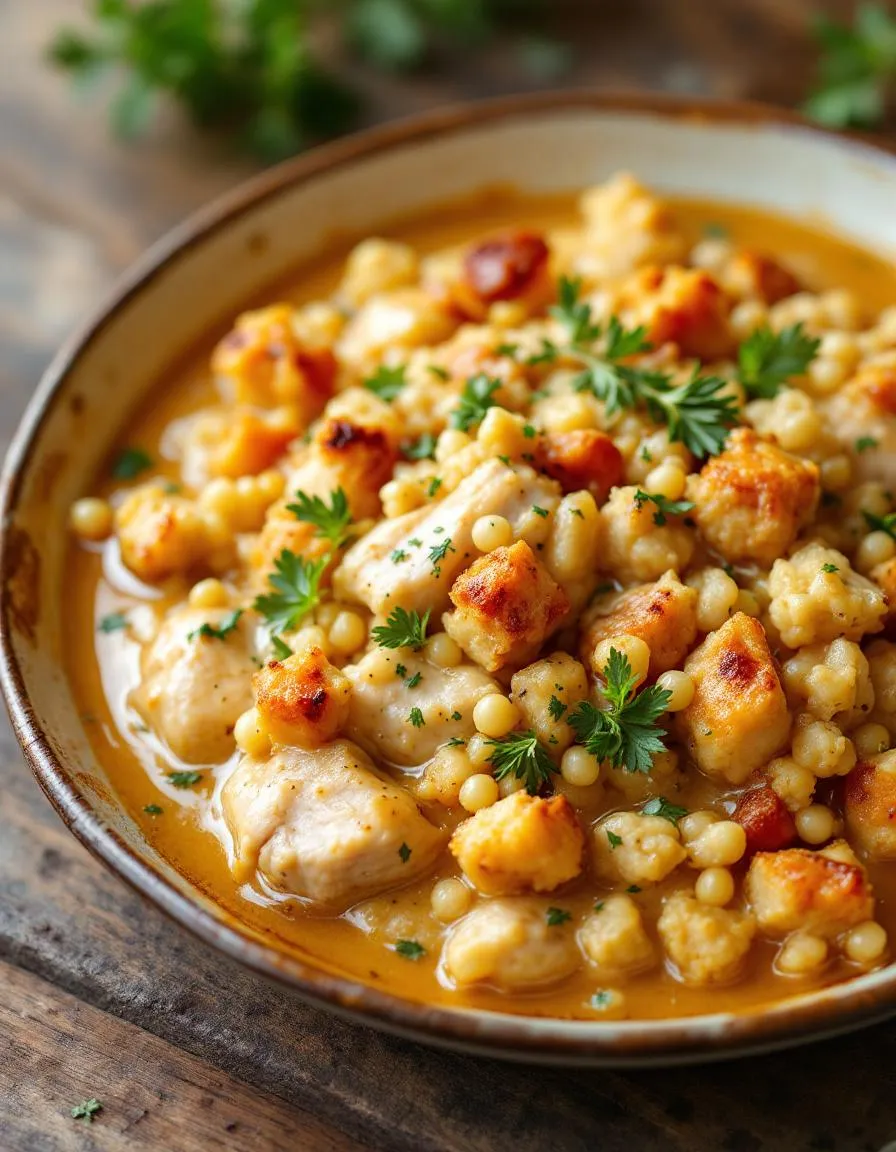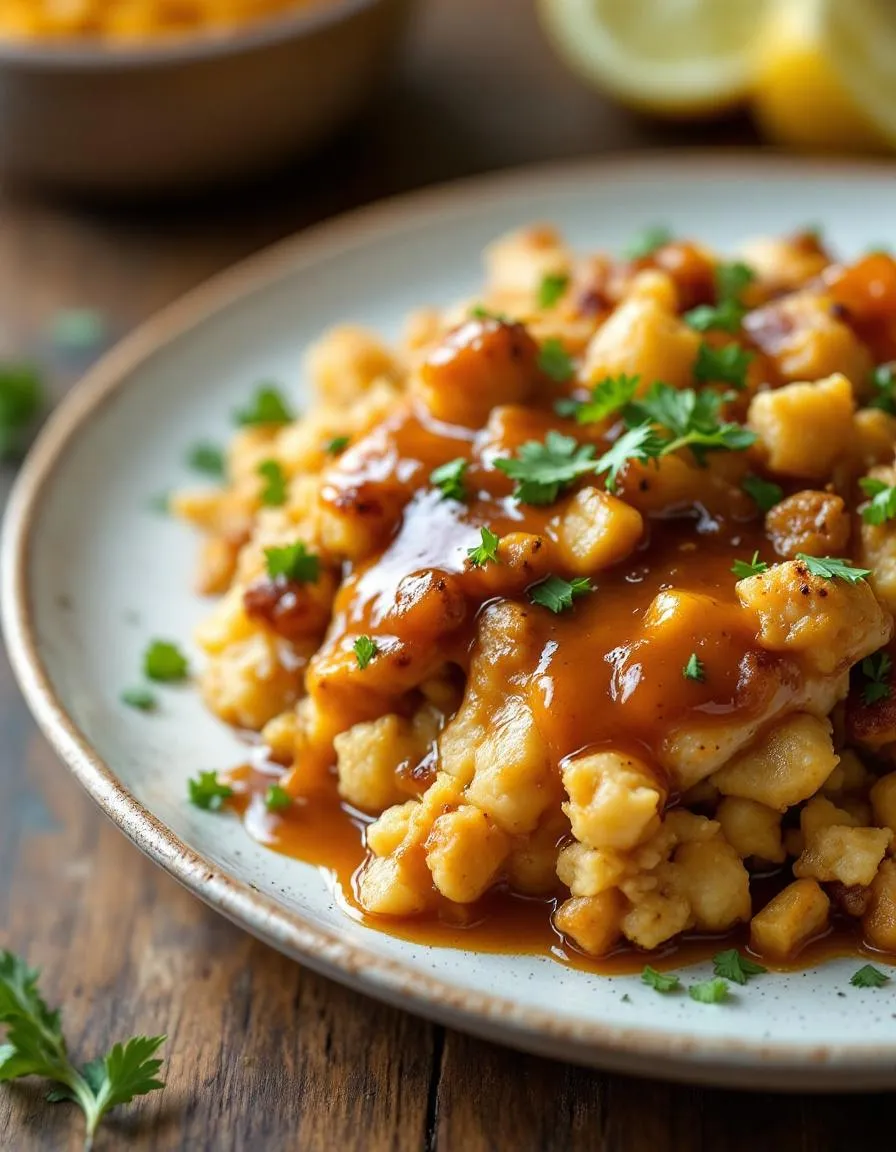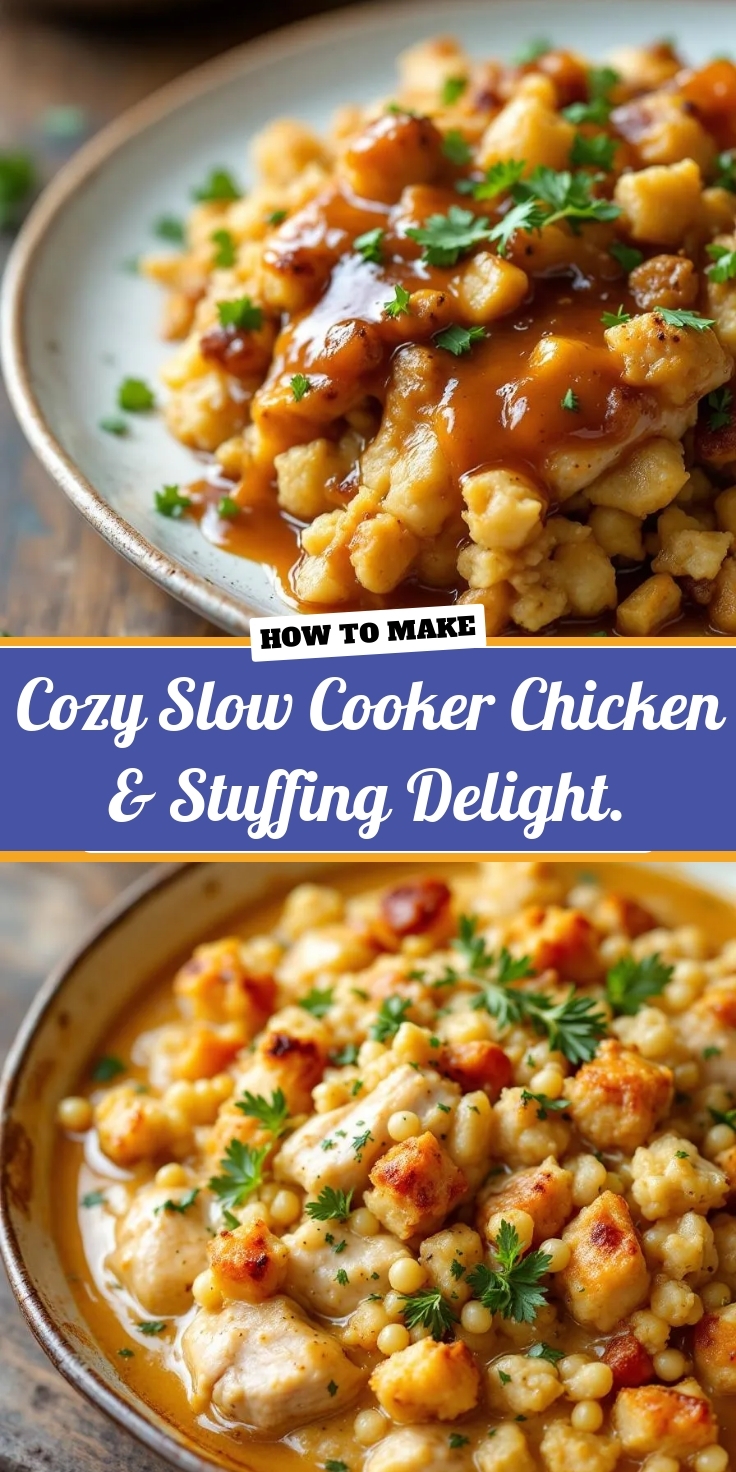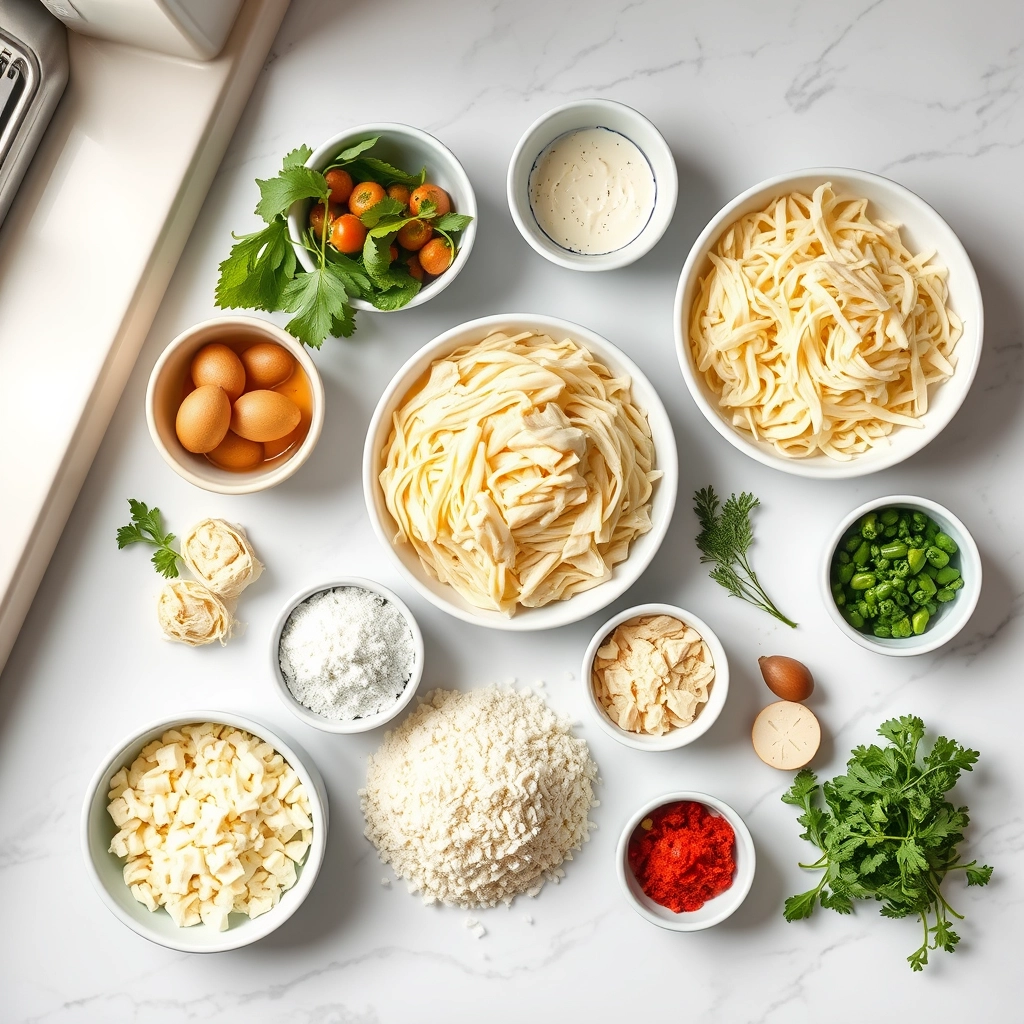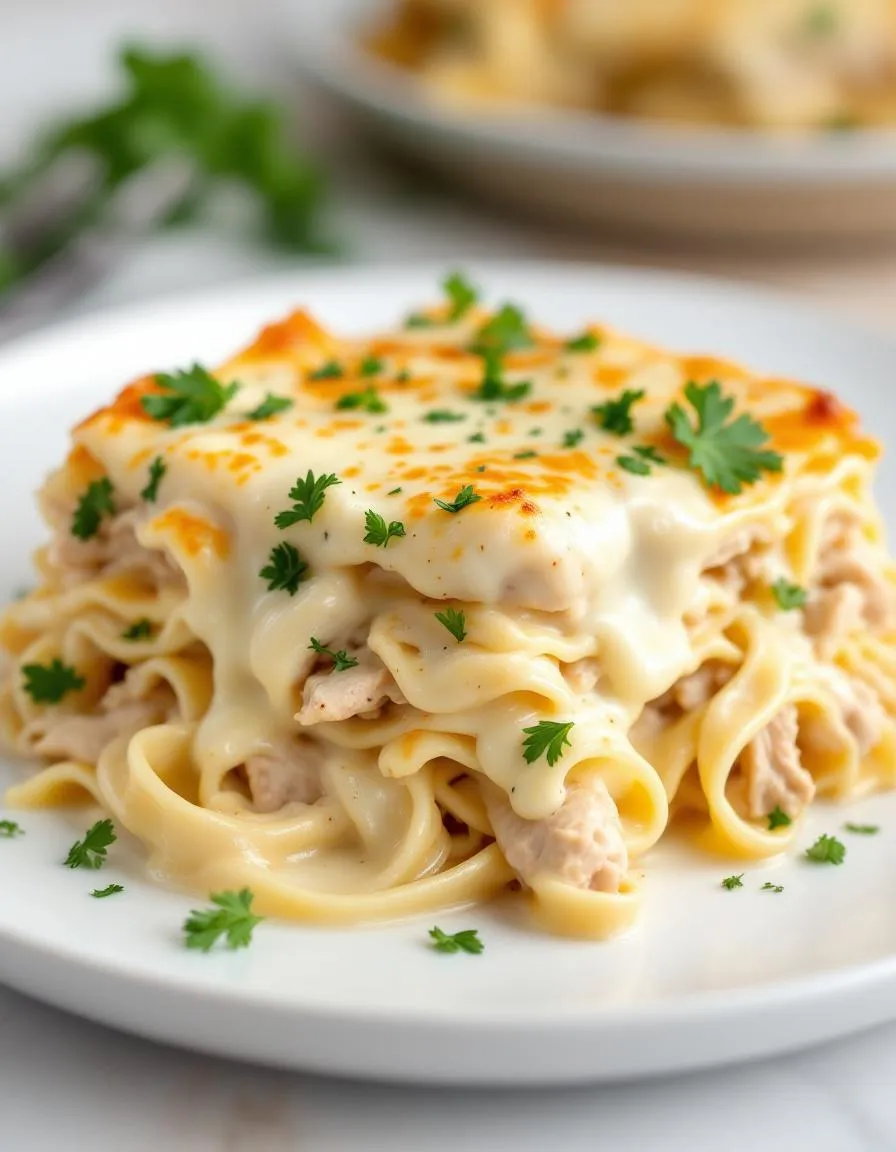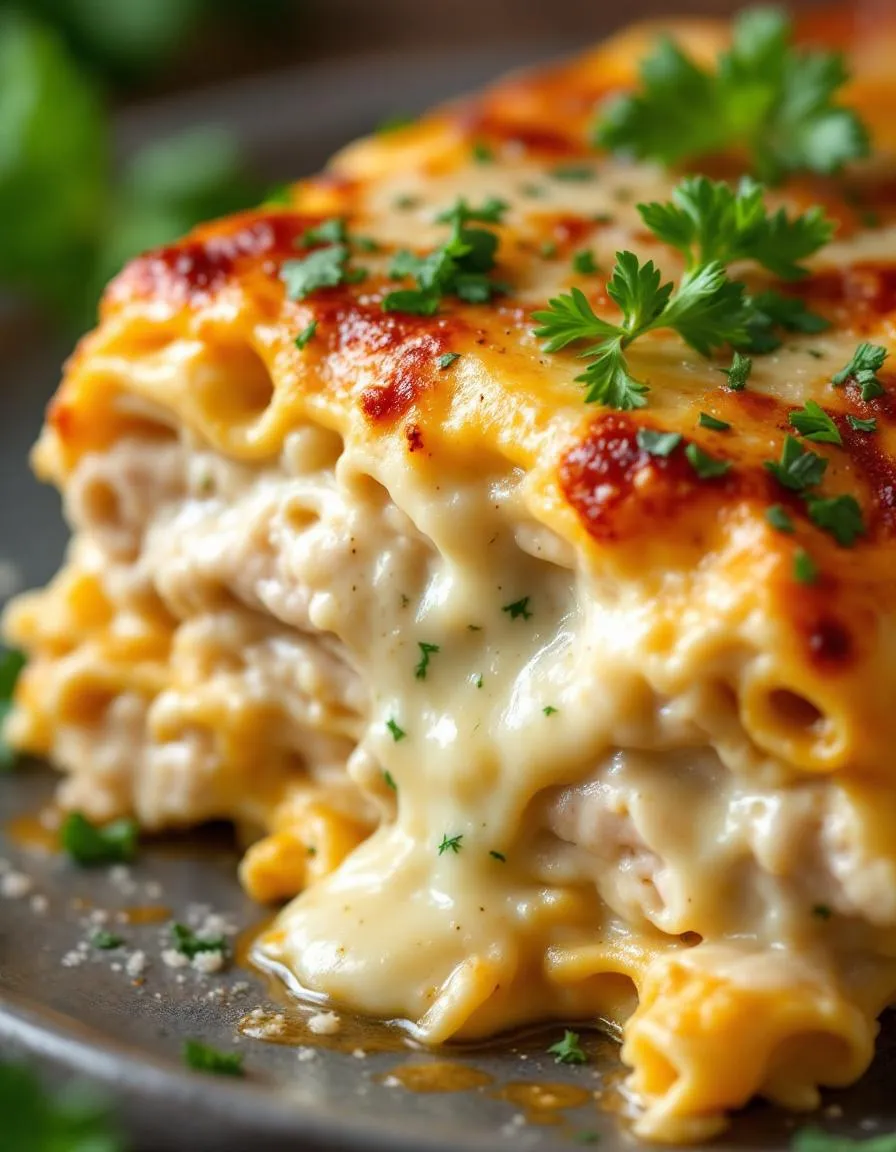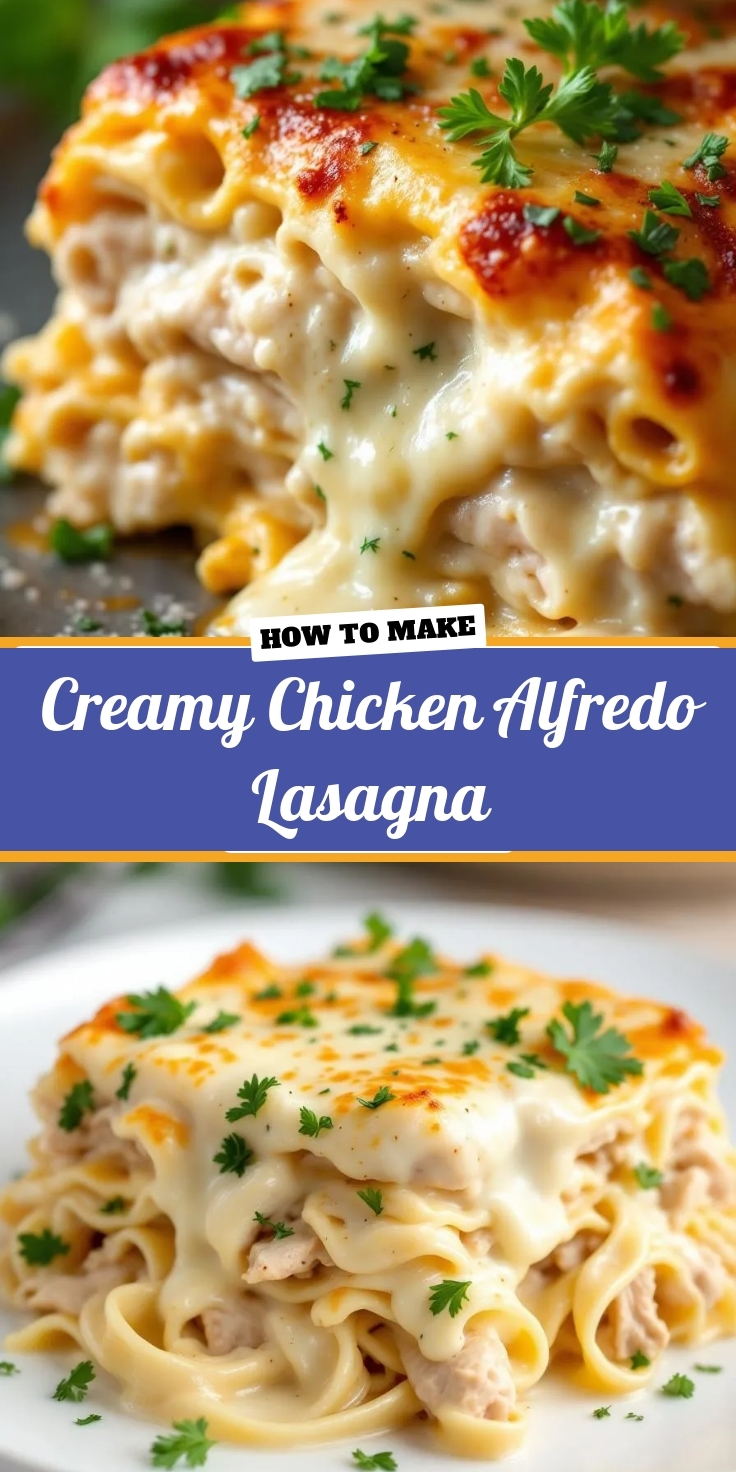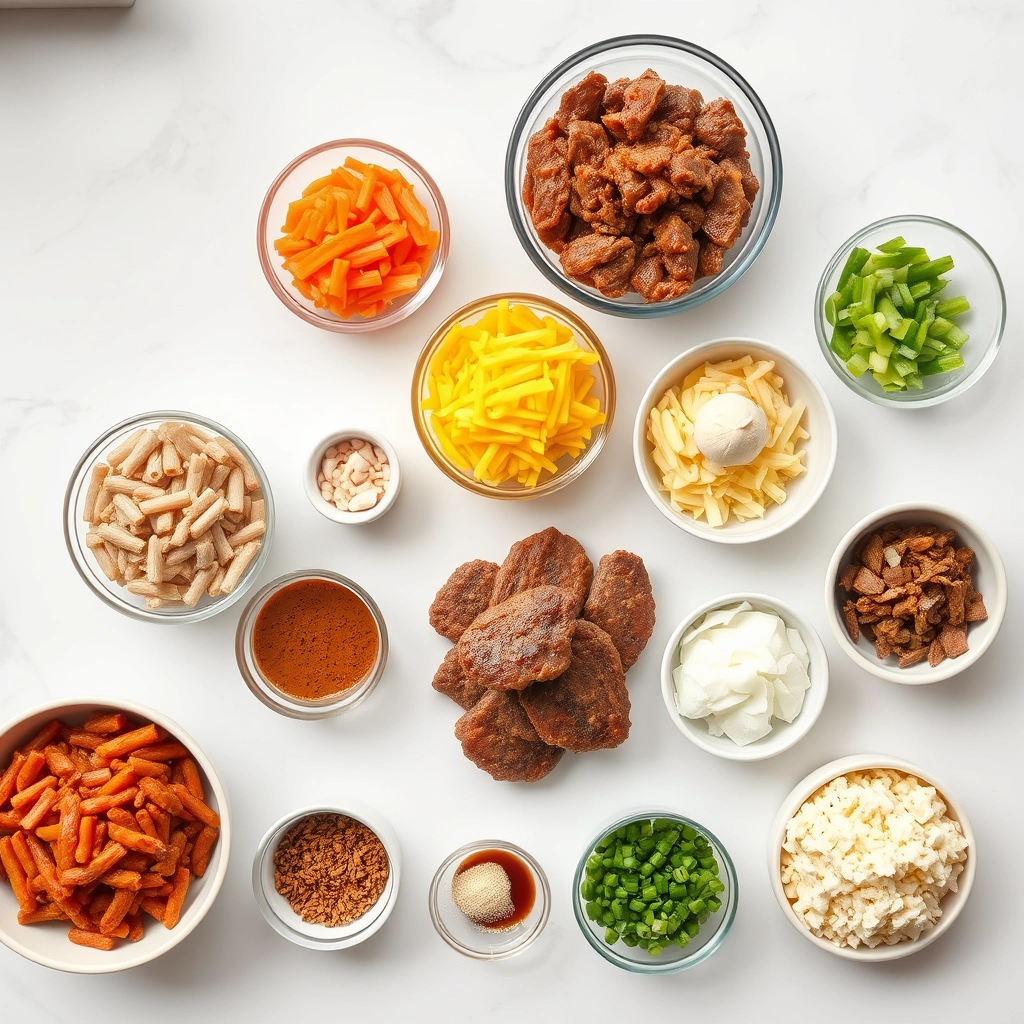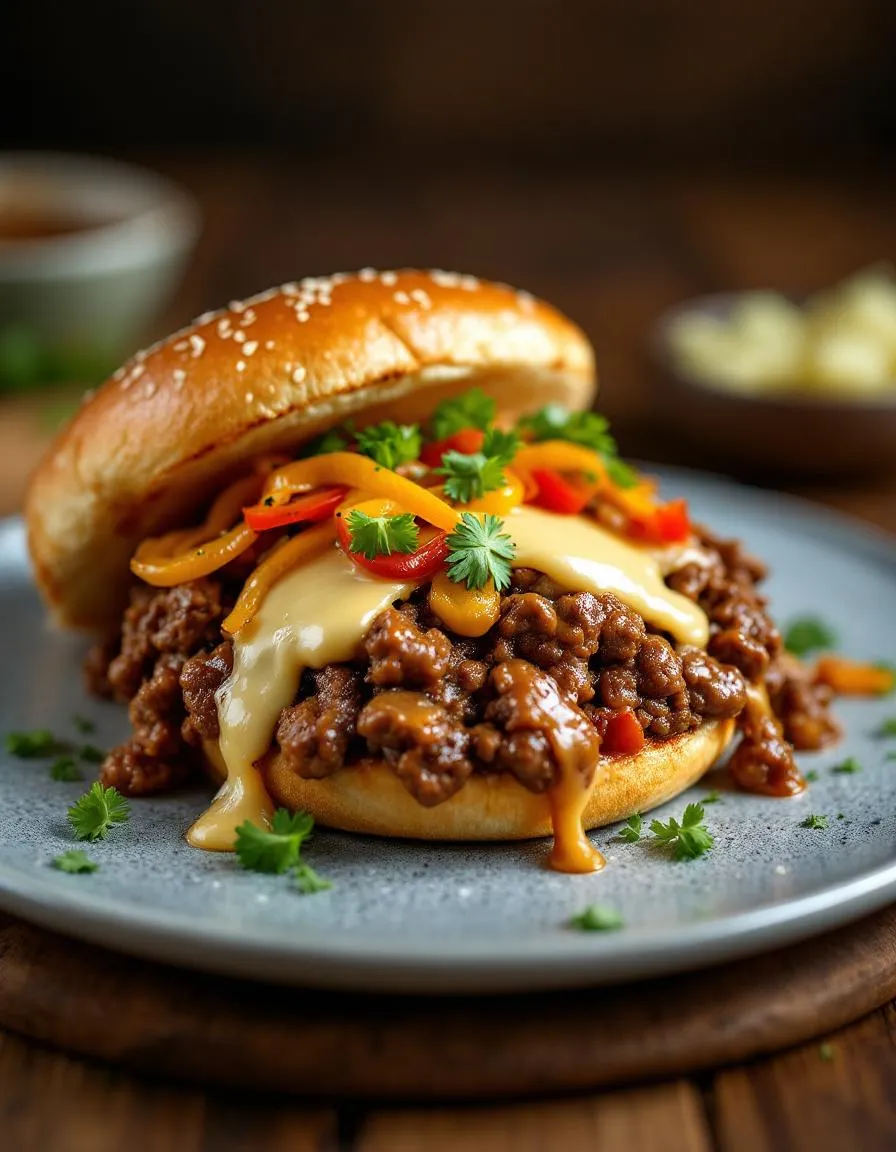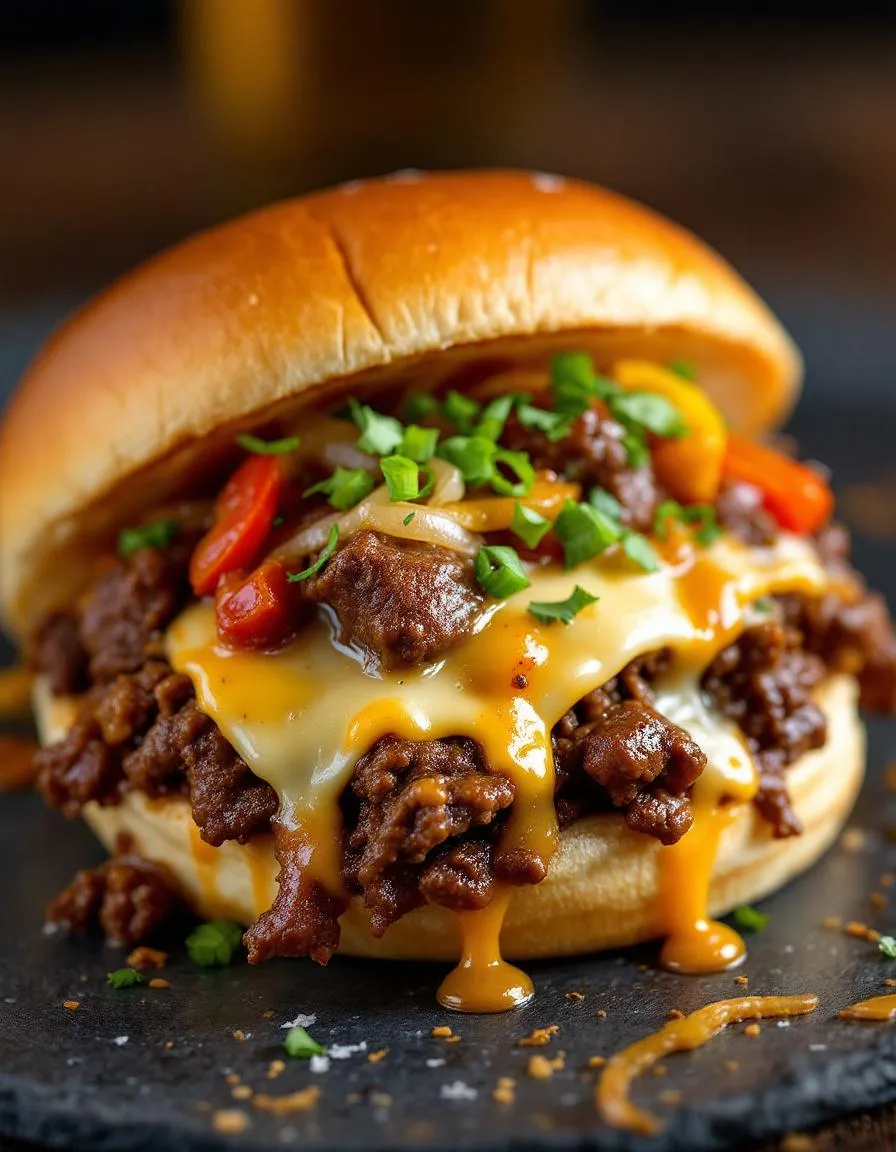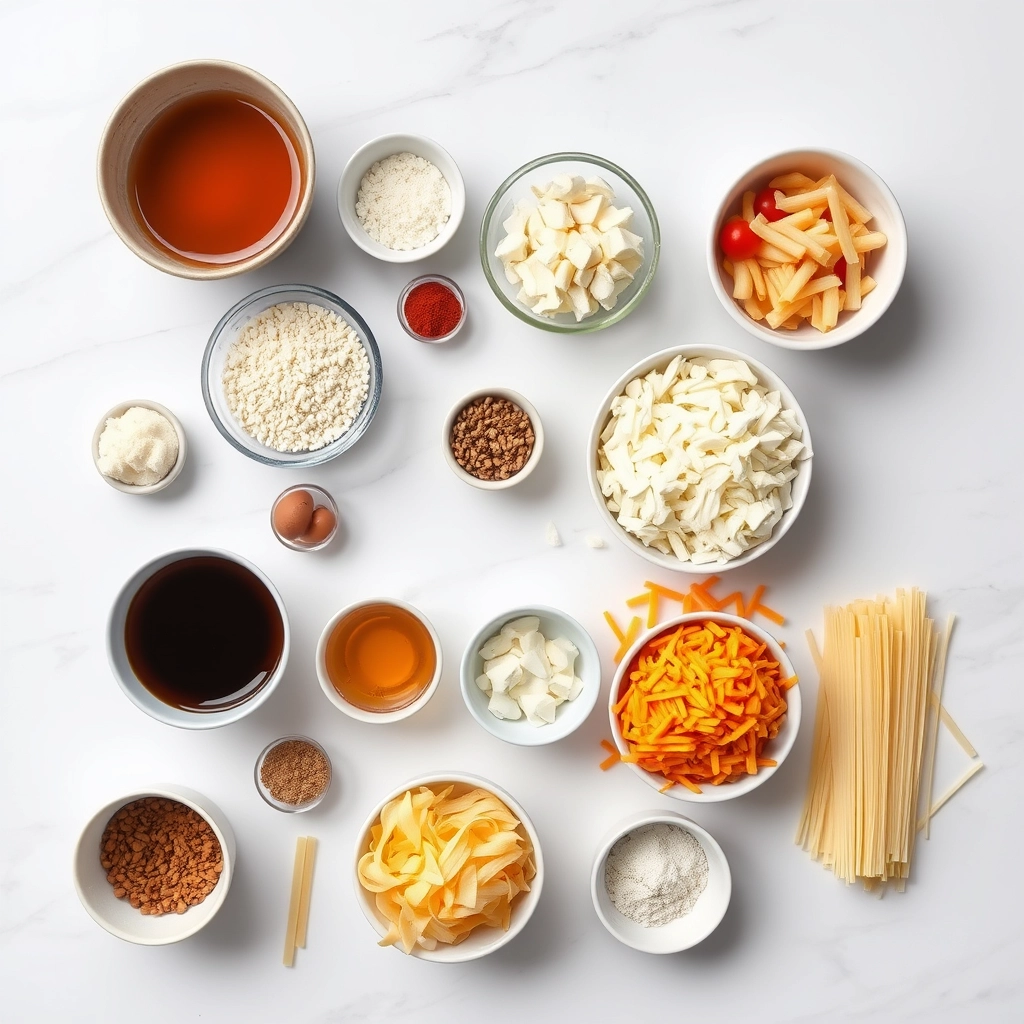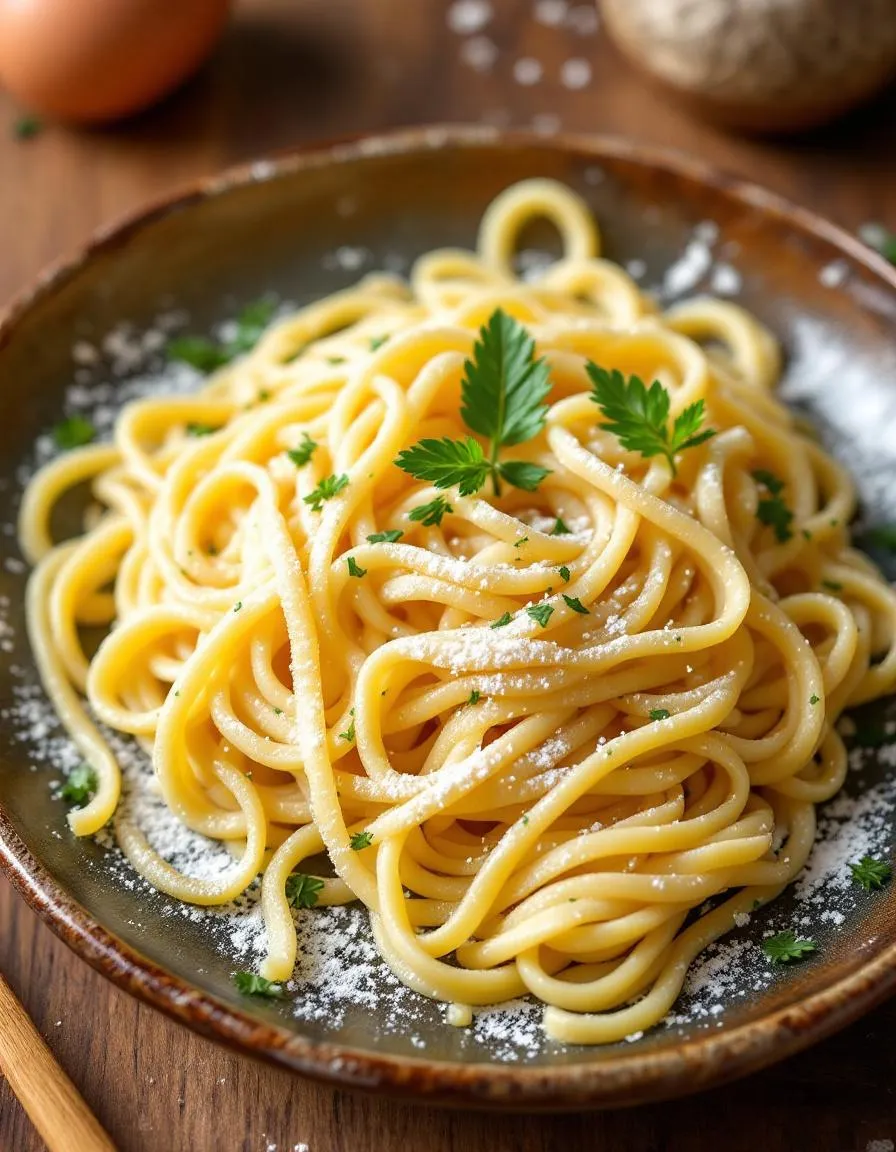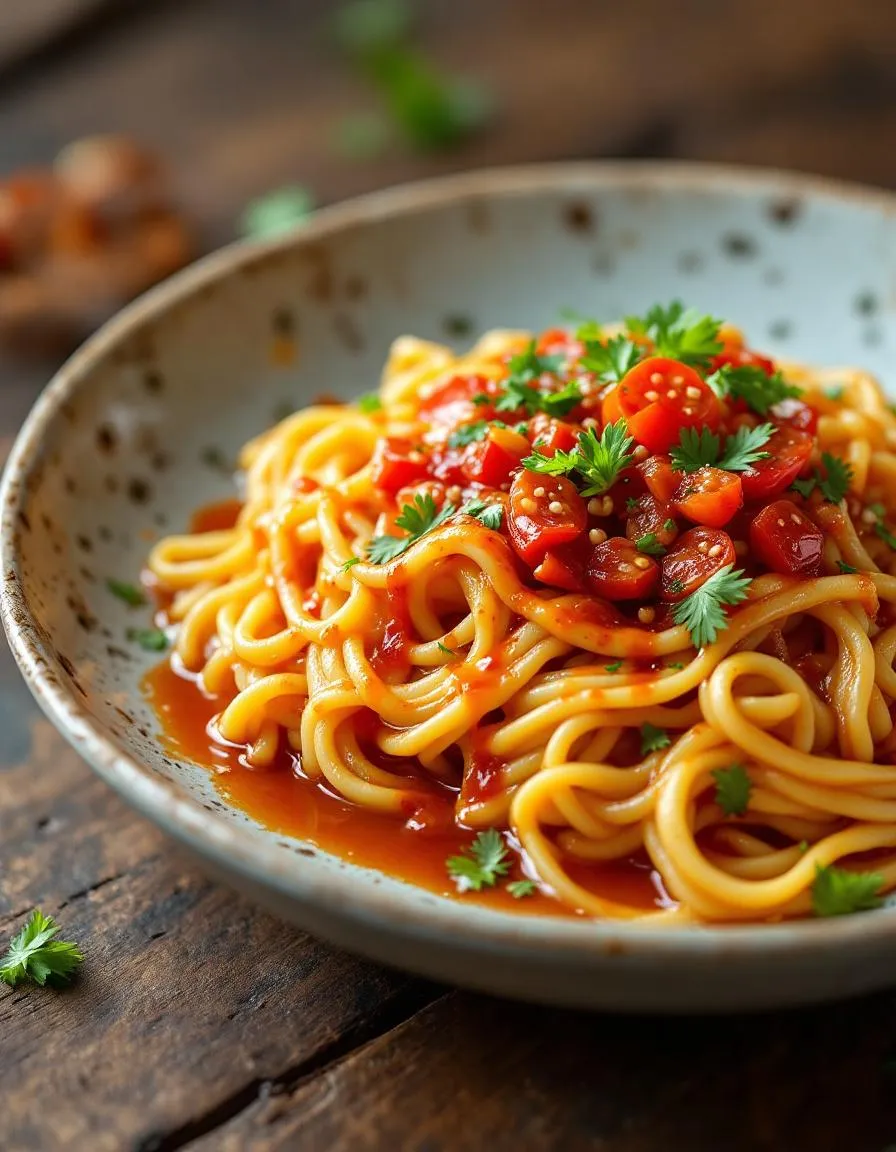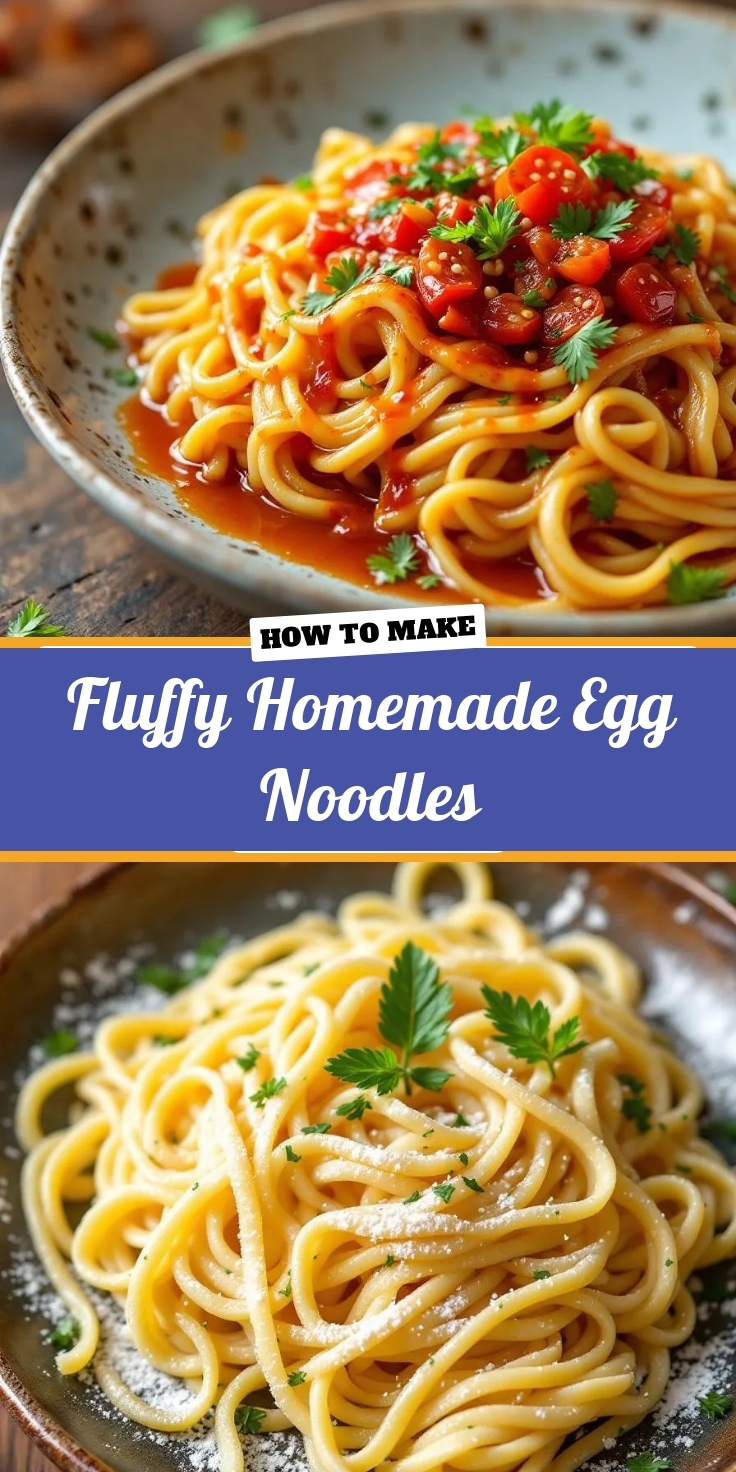“`html
Introduction
There’s something magical about a dish that brings together bold flavors, gooey cheese, and tender chicken—all in one bite. If you’re craving a meal that feels like a warm hug but still packs a punch, then Cheesy Baked Fajita Chicken Delight is your answer. Whether you’re cooking for a busy weeknight dinner or impressing guests at a weekend gathering, this recipe delivers comfort and excitement in every forkful. Plus, it’s easy enough for beginners yet flavorful enough to satisfy even the pickiest eaters. Trust me, once you try it, you’ll wonder how you ever lived without it.
About This Recipe
Cheesy Baked Fajita Chicken Delight is a mouthwatering fusion of juicy chicken, vibrant fajita spices, and melted cheese, all baked to perfection. Unlike traditional fajitas, this dish skips the tortillas and instead layers the ingredients into a casserole-style bake. The result? A hearty, one-pan wonder that’s bursting with flavor and requires minimal cleanup. What makes this recipe stand out is its versatility. You can customize it with your favorite veggies, adjust the spice level, or even swap the cheese to suit your taste. It’s a crowd-pleaser that works for family dinners, potlucks, or meal prep.
If you love easy, cheesy recipes, you’ll appreciate how this dish fits seamlessly into your rotation. It’s a fantastic way to use up leftover chicken or veggies, and it pairs beautifully with simple sides like rice or a crisp salad. For more inspiration on quick, flavorful meals, check out our 5 Easy Weeknight Dinners. And if you’re new to cooking with fajita seasoning, don’t worry—our Essential Spices for Beginners guide will help you build confidence in the kitchen.
This recipe also aligns perfectly with the blog’s mission: to deliver approachable, delicious meals that make cooking fun. No complicated techniques or hard-to-find ingredients here—just straightforward, satisfying food that brings people together. Whether you’re a seasoned home cook or just starting out, Cheesy Baked Fajita Chicken Delight will quickly become a staple in your recipe collection.
Why I Love This Recipe
I’ll never forget the first time I made Cheesy Baked Fajita Chicken Delight. It was a chilly evening, and I wanted something hearty but effortless. The moment I pulled it out of the oven, the aroma of sizzling peppers and melted cheese filled the kitchen, and my family gathered around before I could even set it on the table. That’s the beauty of this dish—it’s more than just food. It’s a reminder of how simple ingredients can create unforgettable moments. Now, whenever I need a guaranteed hit, I turn to this recipe. It never lets me down, and I know it won’t let you down either.
“`
Health and Nutrition
Why it’s good for your body
Cheesy Baked Fajita Chicken Delight packs a powerful nutritional punch while delivering bold flavors. First, the lean chicken breast provides high-quality protein to support muscle growth and repair. Additionally, the blend of fajita spices like cumin and paprika offers antioxidants that help reduce inflammation. Meanwhile, the melted cheese adds calcium for strong bones, making this dish a well-rounded choice.
Moreover, Cheesy Baked Fajita Chicken Delight includes colorful bell peppers, which are rich in vitamin C to boost immunity. The dish also uses olive oil, a heart-healthy fat that promotes better cholesterol levels. Because the recipe bakes instead of fries the ingredients, it cuts down on unnecessary grease without sacrificing taste. As a result, you get a satisfying meal that fuels your body efficiently.
Finally, this dish balances indulgence with nourishment. While the cheese adds richness, the fresh vegetables keep it light and nutrient-dense. Whether you need a post-workout meal or a family-friendly dinner, Cheesy Baked Fajita Chicken Delight delivers both flavor and health benefits in every bite.
How it fits in a healthy lifestyle
Cheesy Baked Fajita Chicken Delight fits seamlessly into a balanced diet. If you’re focusing on high-protein meals, the chicken provides a lean source to keep you full and energized. For those following gluten-free eating habits, this recipe naturally avoids grains, making it a safe and delicious option. Pair it with a side of quinoa or a crisp salad for a complete, wholesome meal.
Planning ahead? This dish stores well for meal prep, so you can enjoy it throughout the week without sacrificing nutrition. If you’re exploring more heart-healthy recipes, check out our guide to balanced dinner ideas. And for tips on incorporating protein-rich meals into your routine, our high-protein meal plan offers plenty of inspiration. With simple ingredients and flexible serving options, Cheesy Baked Fajita Chicken Delight makes healthy eating effortless and enjoyable.
PrintCheesy Baked Fajita Chicken Delight
Description
A flavorful and cheesy baked chicken dish with fajita-inspired spices, bell peppers, and melted cheese.
Ingredients
For the Crust:
- 4 boneless, skinless chicken breasts
- 2 bell peppers (any color), sliced
- 1 onion, sliced
- 1 tbsp olive oil
- 1 tbsp fajita seasoning
- 1 tsp garlic powder
- 1 tsp paprika
- 1 cup shredded cheddar cheese
- 1/2 cup shredded Monterey Jack cheese
- Salt and pepper to taste
- Fresh cilantro for garnish (optional)
Instructions
1. Prepare the Crust:
- Preheat oven to 375°F (190°C). Lightly grease a baking dish.
- In a bowl, toss bell peppers and onions with olive oil, fajita seasoning, garlic powder, paprika, salt, and pepper.
- Place chicken breasts in the baking dish and season with salt and pepper. Top with the seasoned pepper and onion mixture.
- Bake for 25 minutes or until chicken is cooked through (internal temperature of 165°F).
- Remove from oven and sprinkle both cheeses evenly over the chicken and vegetables. Return to oven for 5 minutes or until cheese is melted and bubbly.
- Garnish with fresh cilantro if desired and serve warm.
Notes
You can customize the seasonings to taste.
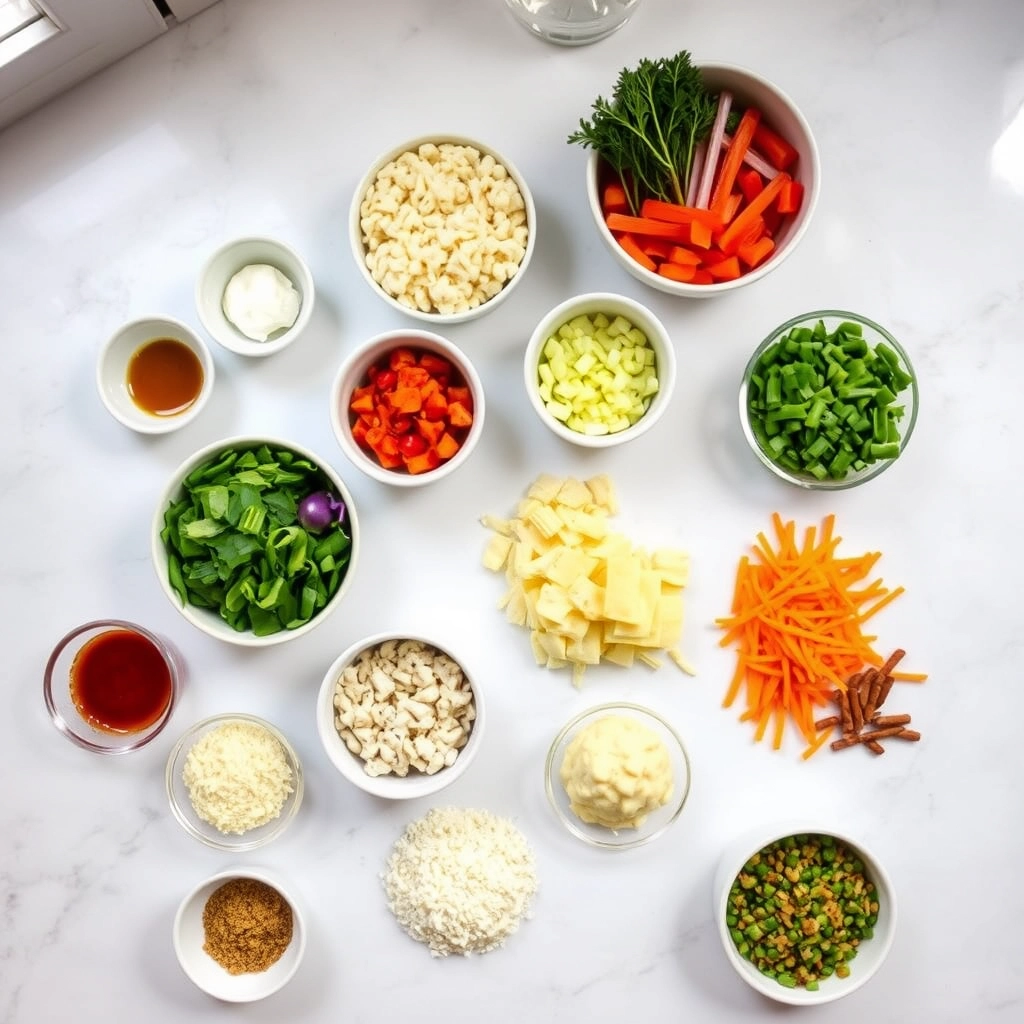
How to Prepare This Dish
Steps and time-saving tips
Start by preheating your oven to 375°F so it’s ready when you finish prepping the Cheesy Baked Fajita Chicken Delight. While it heats, whisk together olive oil, lime juice, and fajita seasoning in a bowl. Then, coat each chicken breast evenly with the marinade and let it sit for 10 minutes—this locks in flavor without extra time. Meanwhile, slice bell peppers and onions into thin strips so they caramelize beautifully in the oven. Layer the veggies in a baking dish, place the marinated chicken on top, and drizzle any remaining marinade over everything. Cover with foil and bake for 20 minutes. While it cooks, shred your cheese blend for maximum meltiness. Uncover the dish, sprinkle the cheese generously, and bake another 10 minutes until bubbly. For a golden finish, broil for 2-3 minutes, but watch closely to avoid burning. Let it rest 5 minutes before serving—this keeps the juices in the chicken tender. Pro tip: Prep your veggies the night before or use pre-sliced fajita mix to save 15 minutes. If you love bold flavors, add a pinch of smoked paprika to the marinade for extra depth.
Mistakes I’ve made and learned from
I once rushed the marinade step for my Cheesy Baked Fajita Chicken Delight, skipping the 10-minute rest, and the chicken tasted bland. Now I never cut that corner—even a short soak makes a difference. Another time, I overcrowded the baking dish with veggies, which steamed instead of roasting. Spreading them in a single layer fixed that. If your cheese isn’t browning evenly, try grating it yourself instead of buying pre-shredded bags (they contain anti-caking agents that hinder melting). For more on perfecting cheese pulls, check out my guide to melty cheese techniques. And if you’ve ever ended up with dry chicken, my juicy chicken secrets explain how oven thermometers and resting time are game-changers. Trust me, these small tweaks turn good dishes into unforgettable ones.
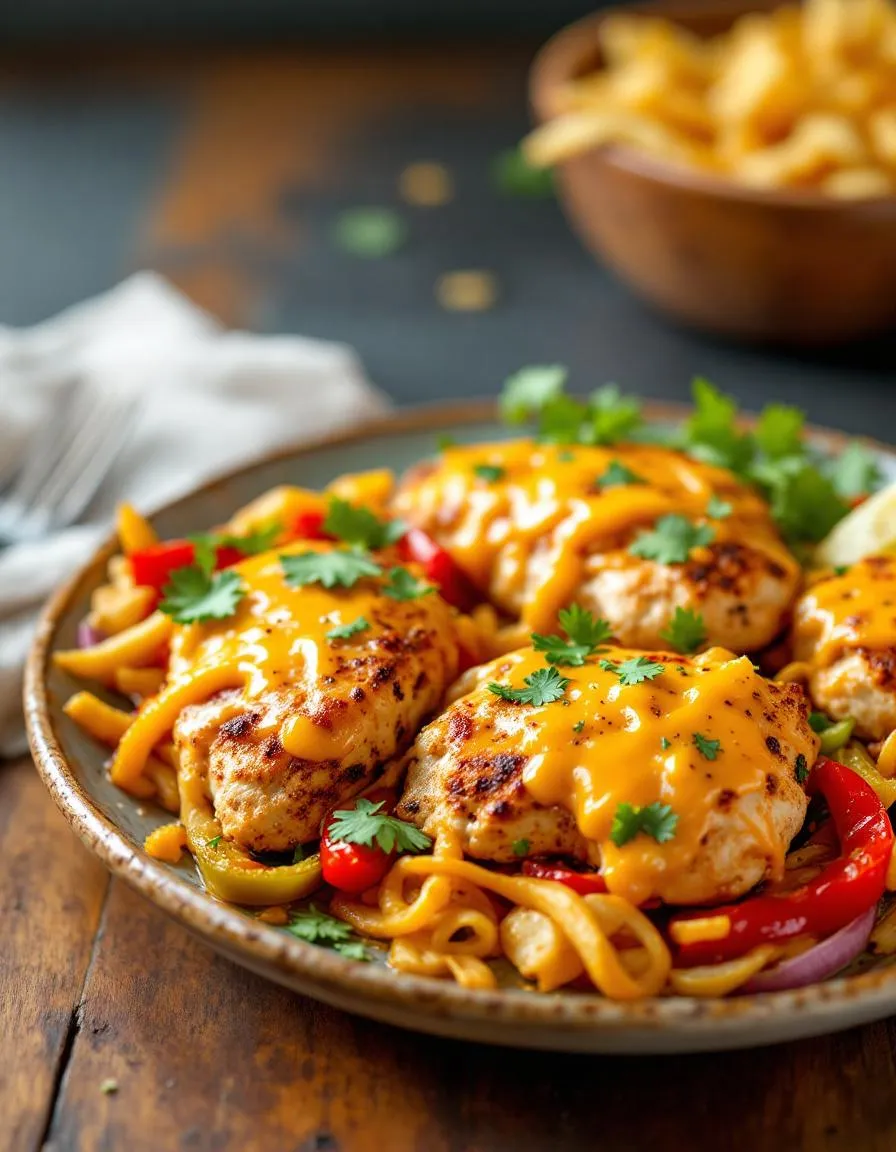
Cultural Connection and Variations
Where this recipe comes from
Cheesy Baked Fajita Chicken Delight bursts with flavors that tell a story of Tex-Mex tradition and home-cooked comfort. Originally inspired by the sizzling fajitas of Northern Mexico and Texas ranch culture, this dish blends smoky spices, tender chicken, and melted cheese into one irresistible bake. Families along the border often tweak the recipe by adding local ingredients like roasted poblanos or tangy cotija cheese. Meanwhile, in my own kitchen, we swap in pepper jack for extra heat and serve it with warm tortillas for scooping up every cheesy bite.
Across the globe, cooks put their own spin on Cheesy Baked Fajita Chicken Delight. In Spain, they might layer in chorizo and manchego, while in India, garam masala and paneer could steal the show. Some Midwest versions even use cream of chicken soup for extra richness. No matter where you go, the core idea remains the same: juicy chicken, vibrant peppers, and gooey cheese baked to perfection. It’s the kind of dish that adapts to any table while keeping its crowd-pleasing soul.
How it fits in today’s cooking
Today, Cheesy Baked Fajita Chicken Delight shines as a versatile star for busy weeknights and festive gatherings alike. Modern cooks love how easily it fits into meal prep routines, especially when paired with quick side dishes like cilantro lime rice or roasted veggies. During holidays, some families dress it up with festive toppings like pomegranate seeds or crispy tortilla strips, turning it into a centerpiece that rivals traditional casseroles.
Health-conscious tweaks also keep this recipe current. Many now use Greek yogurt instead of sour cream or load up on extra bell peppers for crunch. Others layer it into meal prep containers for grab-and-go lunches. Whether you stick to the classic version or experiment with new twists, Cheesy Baked Fajita Chicken Delight proves that comfort food never goes out of style.
Taste and Texture
What makes it delicious
Cheesy Baked Fajita Chicken Delight bursts with bold, smoky flavors and a satisfying contrast of textures. Tender, juicy chicken soaks up the zesty fajita spices, while melted cheese adds a rich, gooey layer that pulls apart with every bite. The bell peppers and onions caramelize into sweet, slightly crisp ribbons, balancing the dish’s creamy, savory depth. Meanwhile, the aroma of sizzling garlic, cumin, and paprika fills the kitchen, making it irresistible even before the first forkful. Whether you savor it fresh from the oven or as leftovers, Cheesy Baked Fajita Chicken Delight delivers a fiesta of flavors in every mouthful.
Boosting the flavor
For an extra kick, swap Monterey Jack cheese with pepper jack or sprinkle in a dash of chili powder. A squeeze of lime just before serving brightens the dish, while a dollop of creamy avocado sauce adds cool contrast. If you love heat, toss in pickled jalapeños or drizzle with smoky chipotle dressing. Experiment with fresh cilantro or a sprinkle of cotija cheese for another layer of texture and tang. With these tweaks, you can tailor Cheesy Baked Fajita Chicken Delight to your taste—every time.
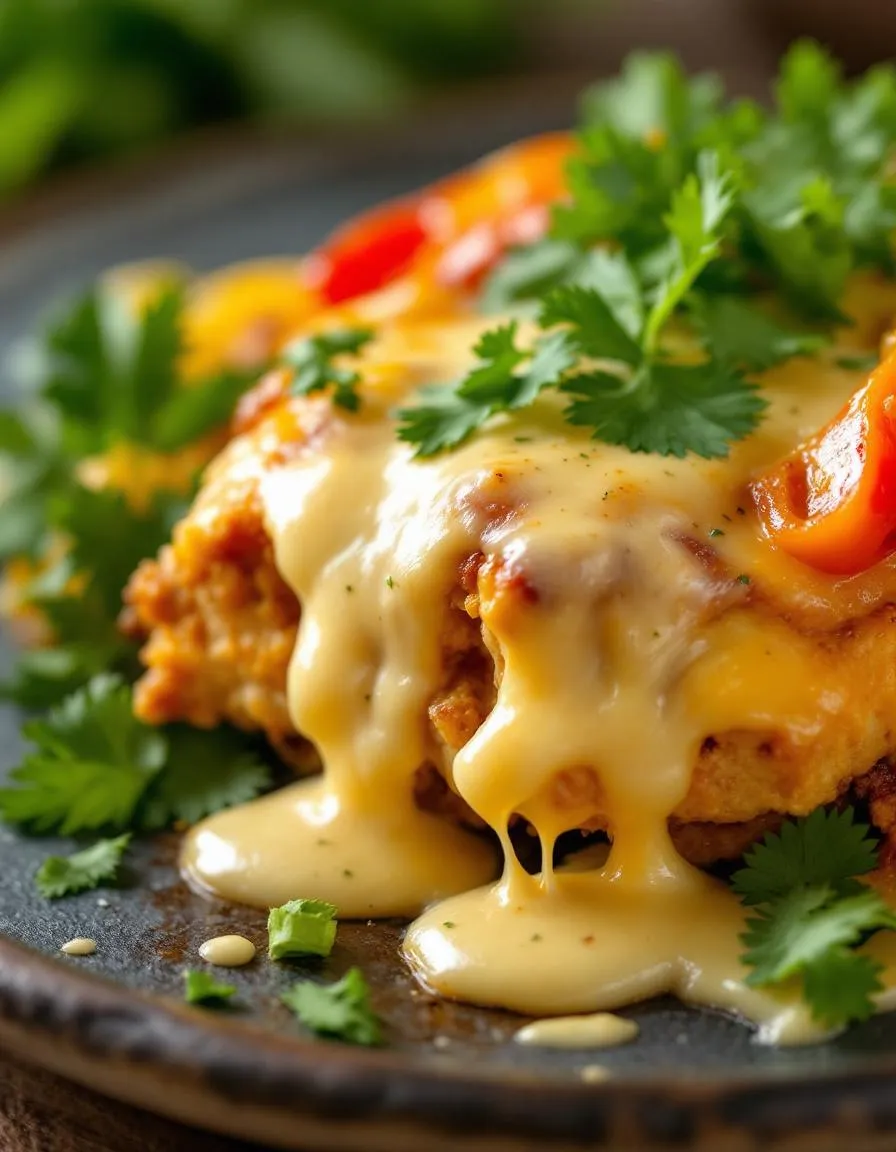
Tips for Success
Best practices for results
For the best Cheesy Baked Fajita Chicken Delight, always preheat your oven to ensure even cooking. Additionally, slice your chicken and veggies uniformly so everything bakes at the same rate. Use freshly shredded cheese instead of pre-shredded for a smoother melt, and don’t skip the fajita seasoning—it’s key for bold flavor. Finally, let the dish rest for 5 minutes after baking so the cheese sets perfectly.
Mistakes to avoid
Avoid overcrowding the baking dish, as this can lead to steaming instead of baking. For crispier results, spread the ingredients in a single layer. Also, resist the urge to overbake the chicken, which can dry it out—use a meat thermometer to check for 165°F. If you’re new to handling raw poultry, review our chicken safety guide first. Lastly, balance the cheese and seasoning properly; too much cheese can overwhelm the spices, so follow our perfect cheese ratio tips for guidance.
Serving and Pairing Suggestions
How to serve this dish
Bring your Cheesy Baked Fajita Chicken Delight to life with vibrant presentation. For a family dinner, layer slices over a bed of cilantro-lime rice and drizzle with extra melted cheese. Alternatively, serve it straight from the skillet for a rustic, shareable centerpiece. Brighten the plate with fresh pico de gallo, avocado slices, or a sprinkle of chopped cilantro. This dish shines at gatherings, whether you’re hosting a game-day spread or a casual weekend brunch. For a festive twist, pair individual portions with warm tortillas and let guests build their own loaded bites.
What goes well with it
Balance the bold flavors of Cheesy Baked Fajita Chicken Delight with cooling sides like a crisp avocado ranch salad or tangy lime-marinated slaw. If you crave heartier pairings, try roasted garlic mashed potatoes or charred corn on the cob. For drinks, a zesty margarita or chilled horchata complements the spices perfectly. Don’t forget to round out the meal with warm cinnamon sugar churros for a sweet finish that contrasts the savory main dish.
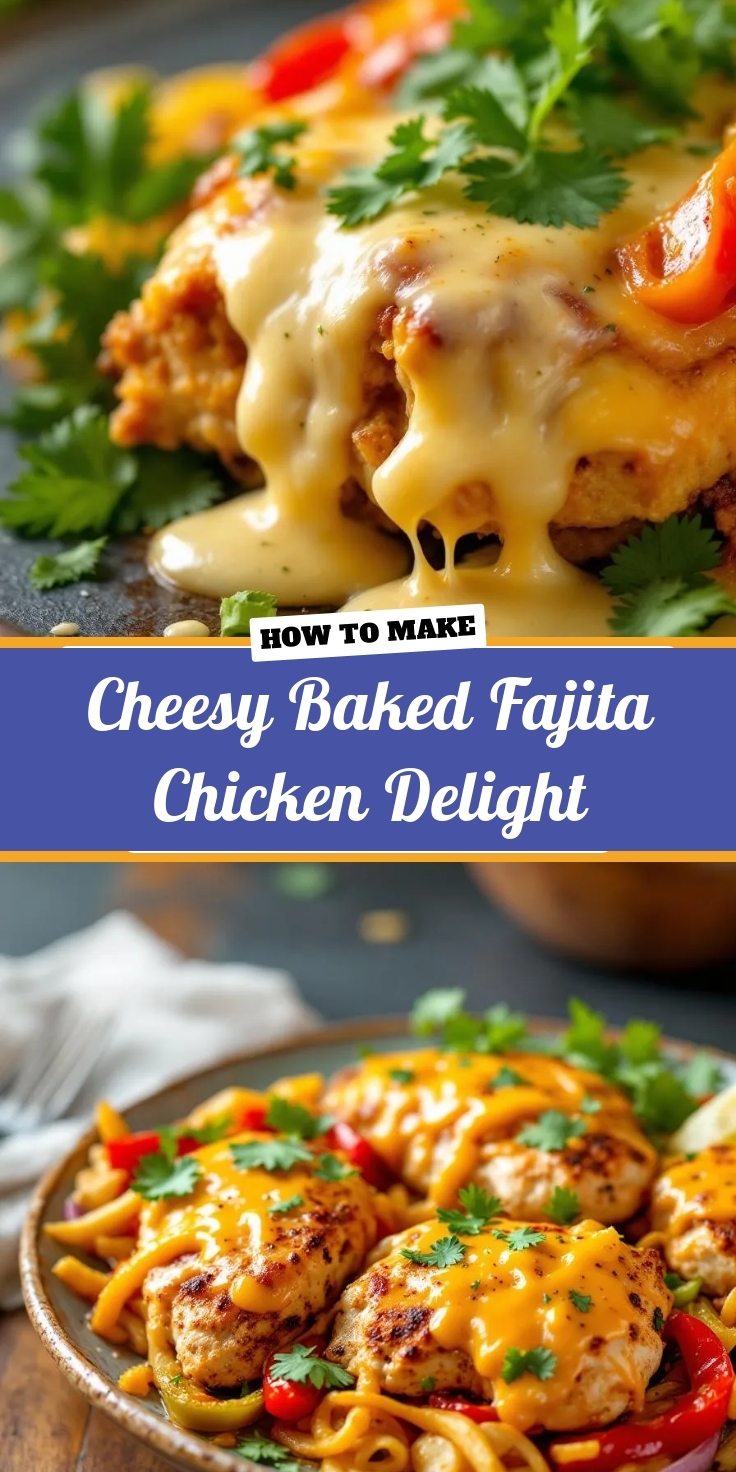
You’ll need boneless chicken breasts, fajita seasoning, bell peppers, onions, shredded cheese (like cheddar or Monterey Jack), sour cream, and tortillas. Cheesy Baked Fajita Chicken Delight also works well with added toppings like jalapeños or fresh cilantro for extra flavor.
Cheesy Baked Fajita Chicken Delight typically takes about 25–30 minutes in a preheated oven at 375°F. The chicken should reach an internal temperature of 165°F, and the cheese should be fully melted and bubbly for the best results.
Yes! You can prep the chicken and veggies in advance and store them in the fridge for up to 24 hours. When ready, assemble with cheese and bake—Cheesy Baked Fajita Chicken Delight tastes just as fresh and delicious.
Pair Cheesy Baked Fajita Chicken Delight with Mexican rice, refried beans, or a crisp green salad. Warm tortillas or tortilla chips also make great accompaniments for scooping up the cheesy, flavorful filling.


